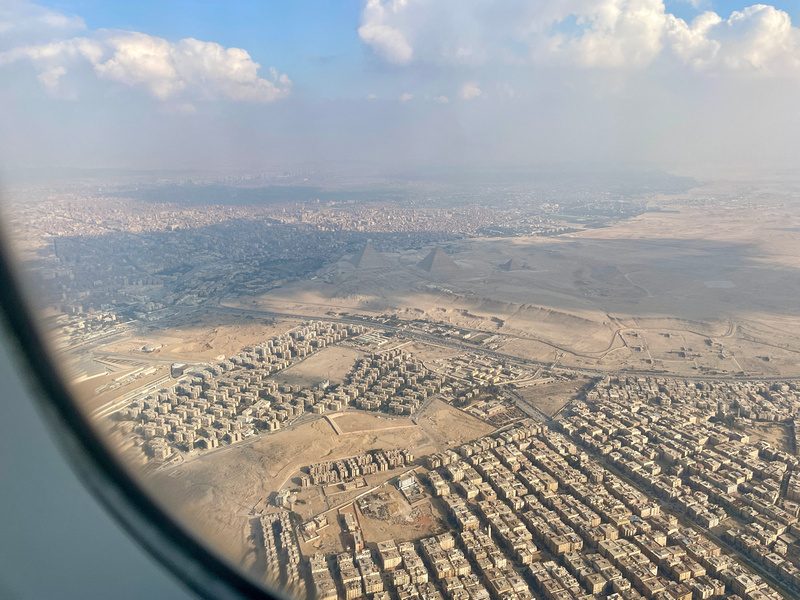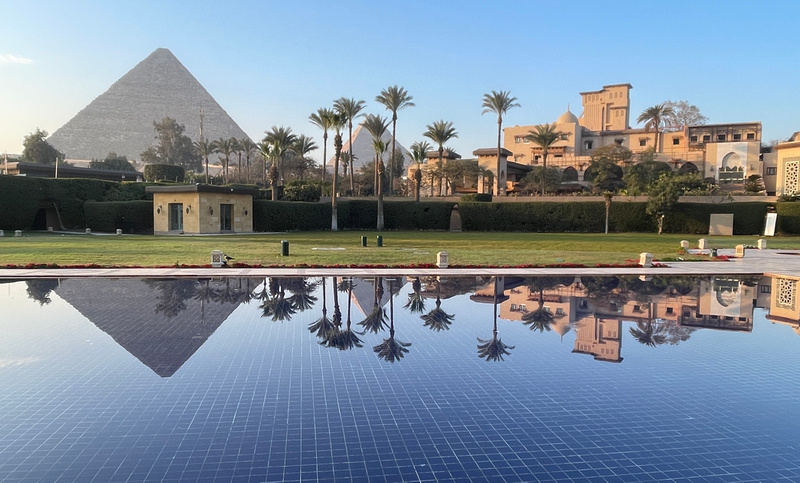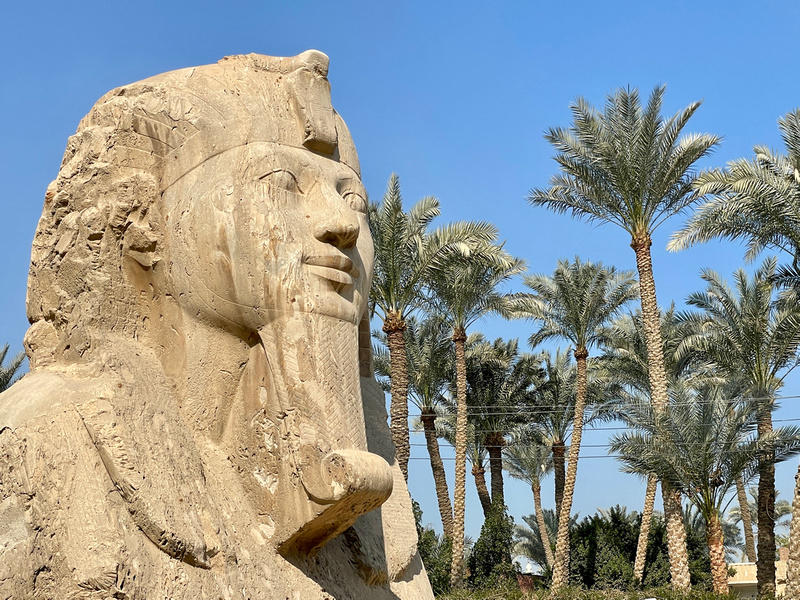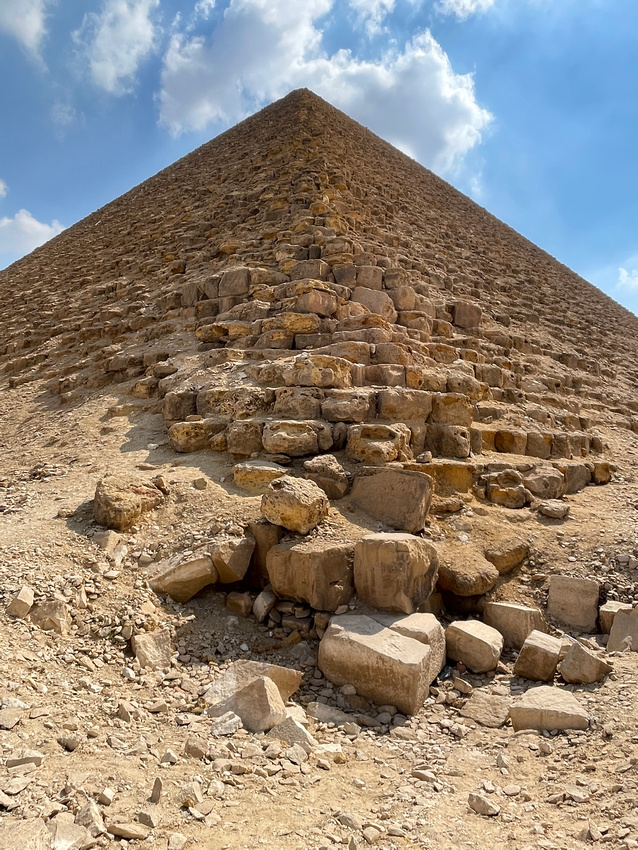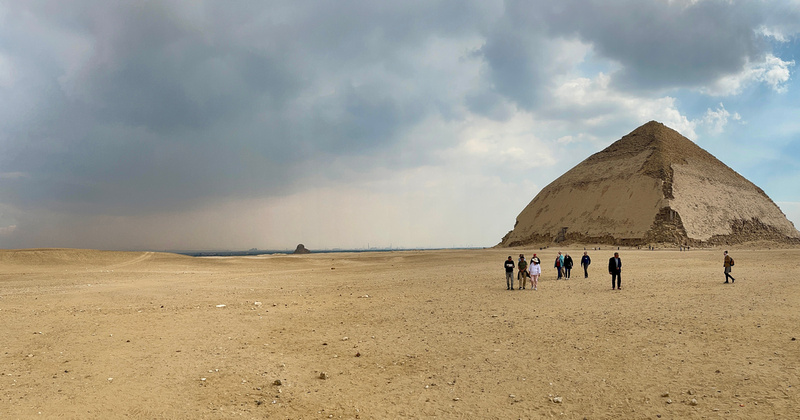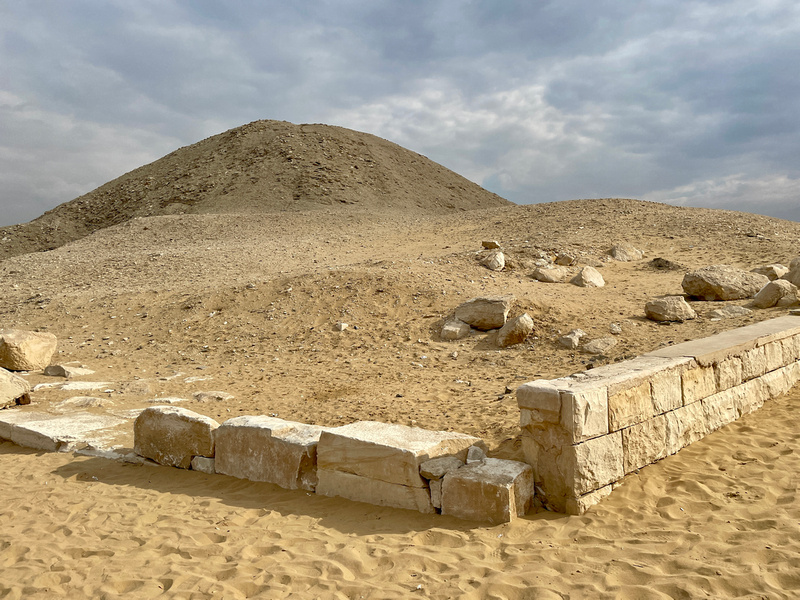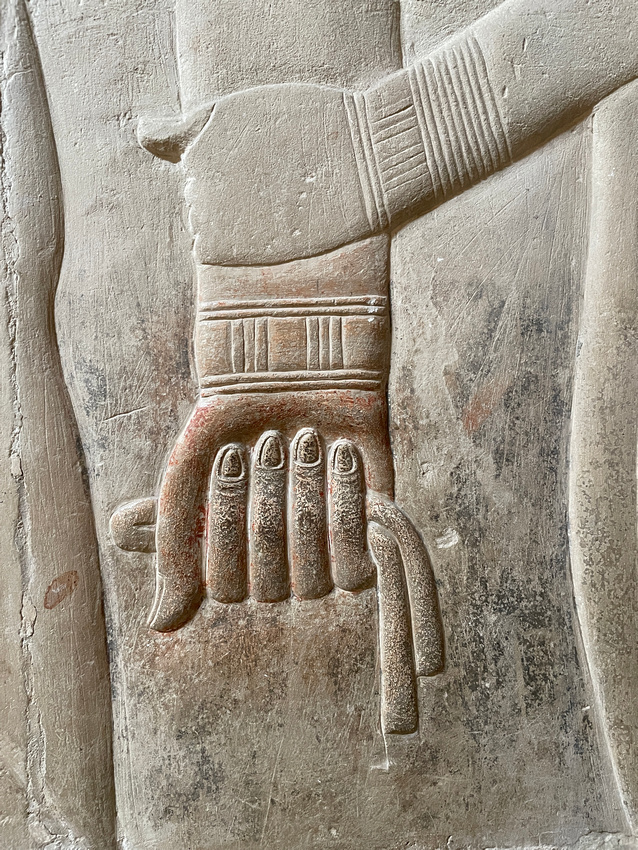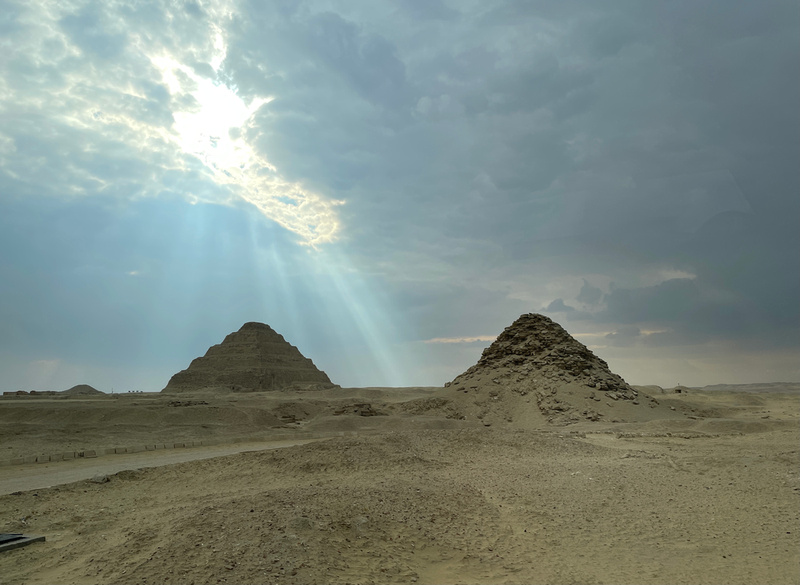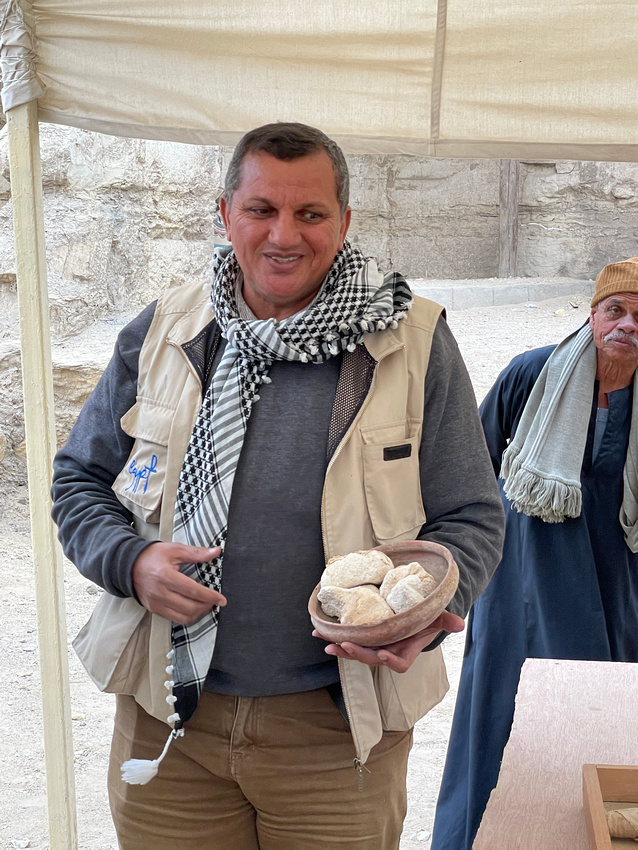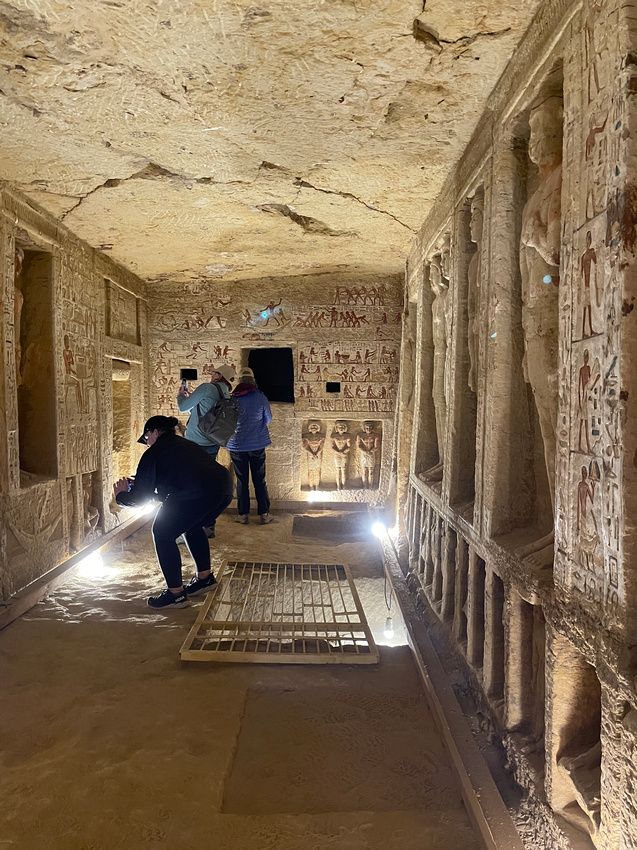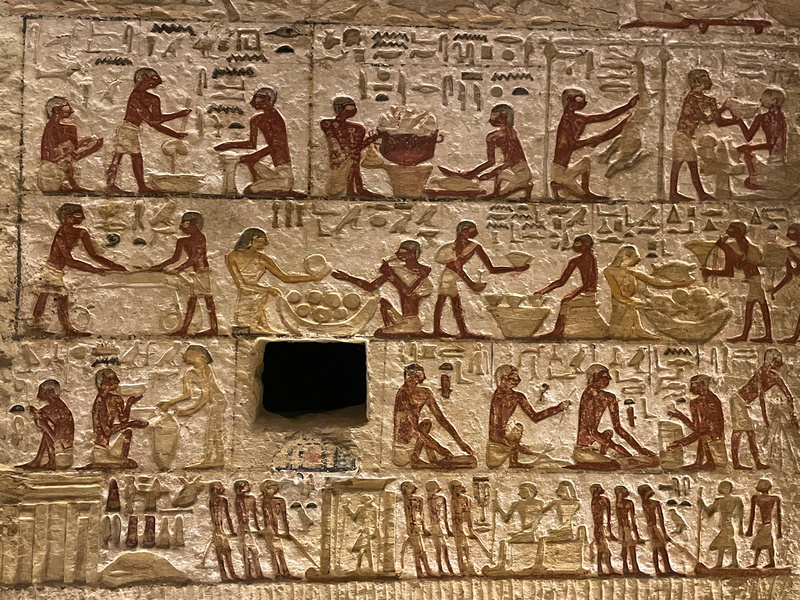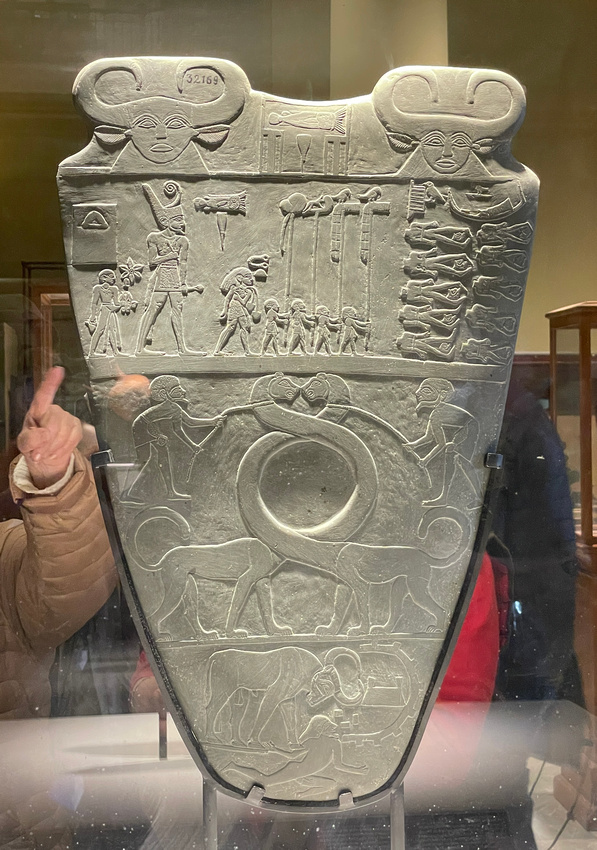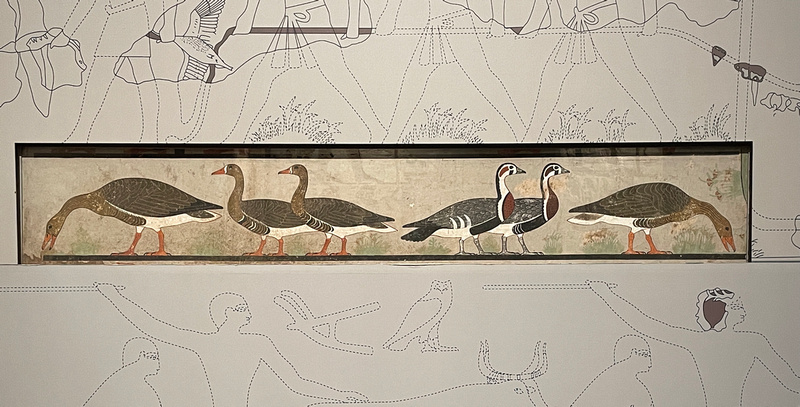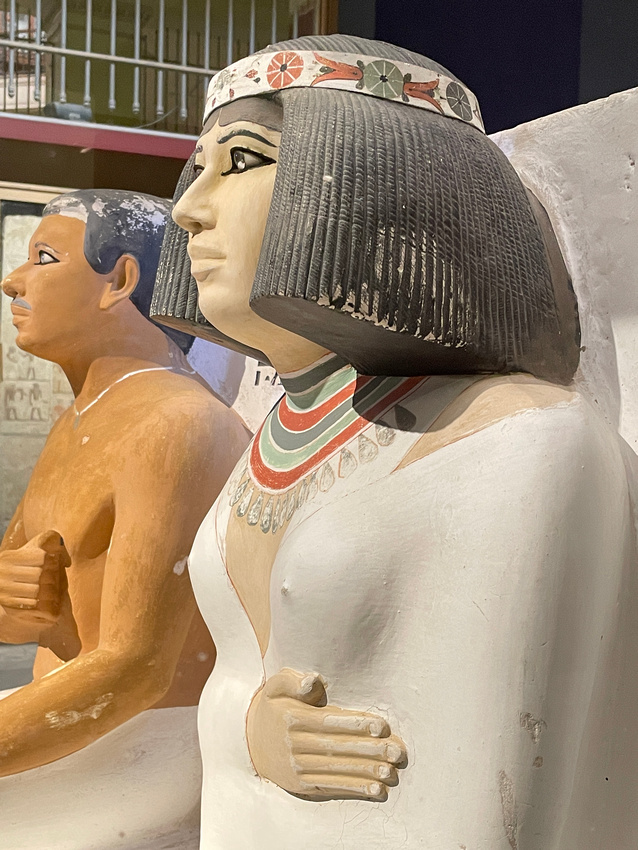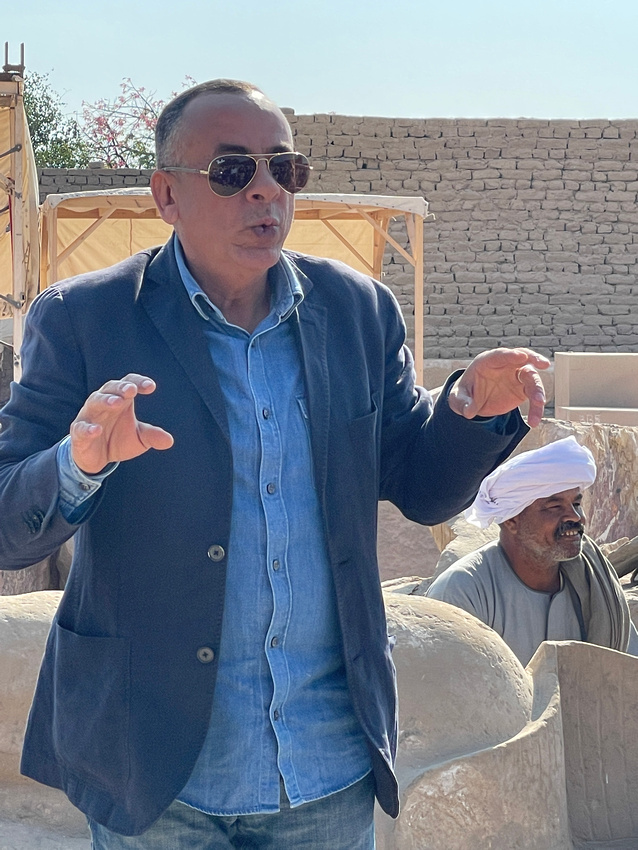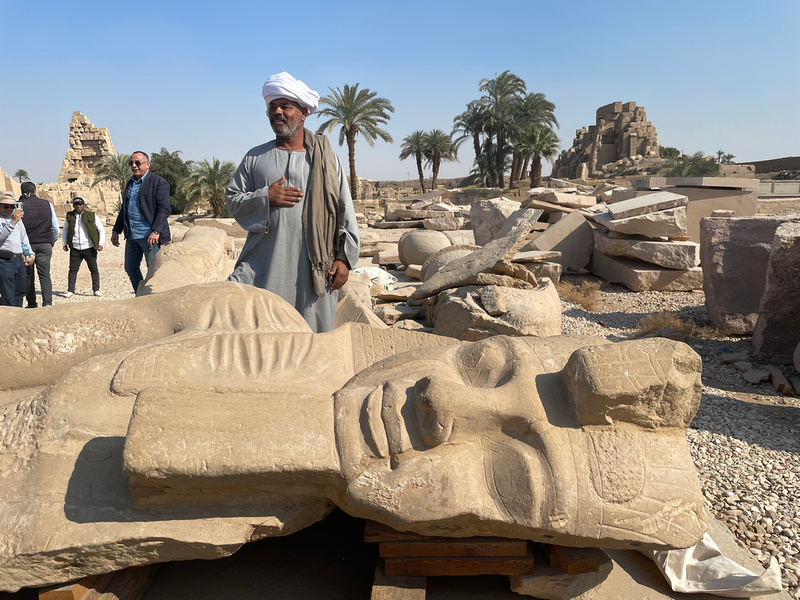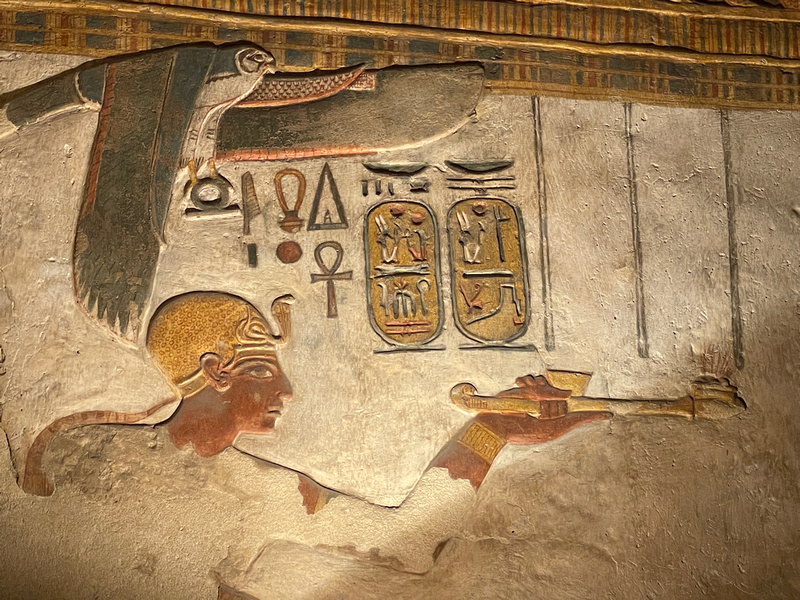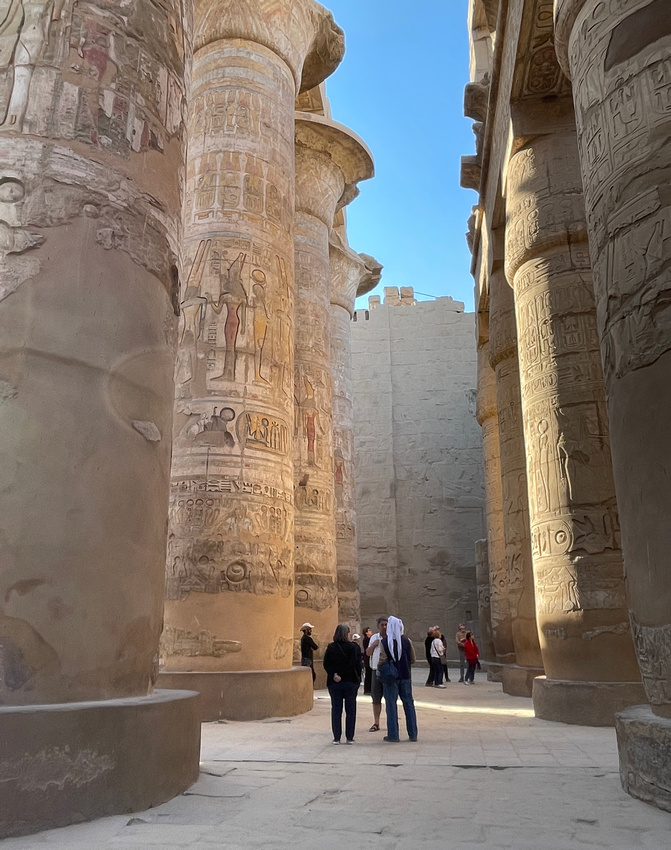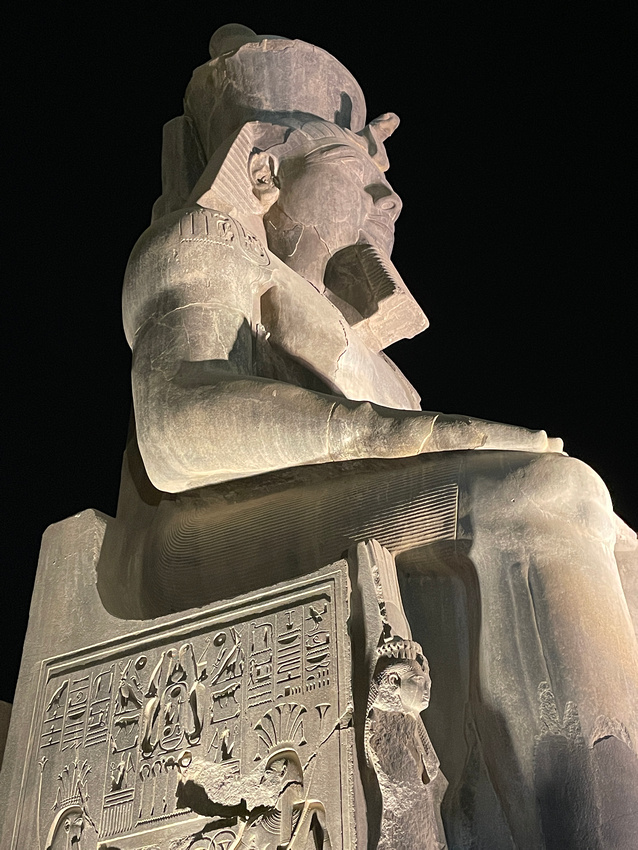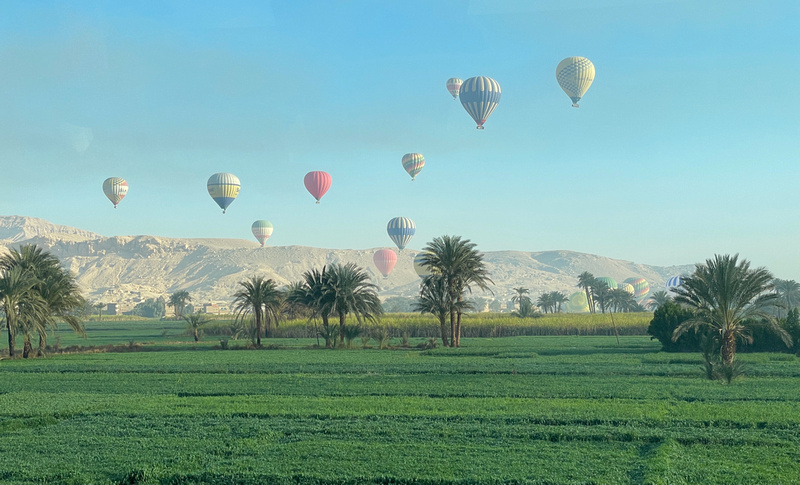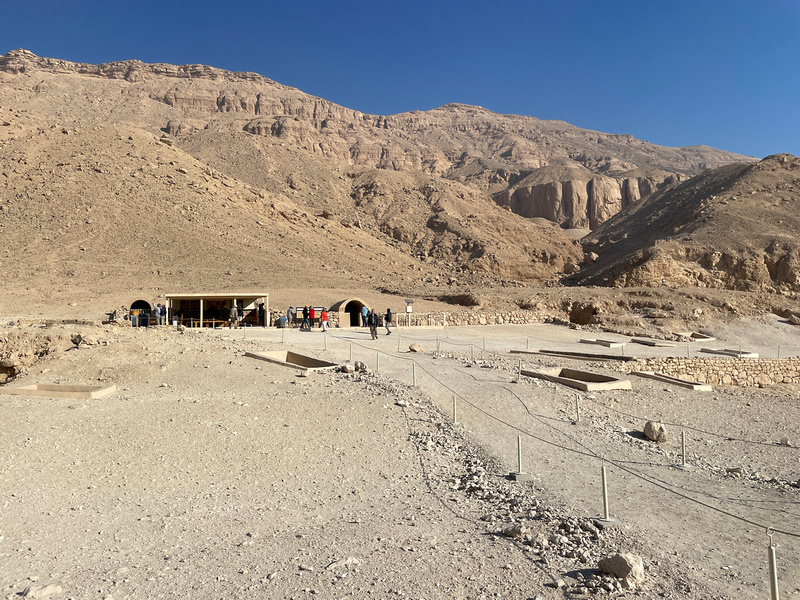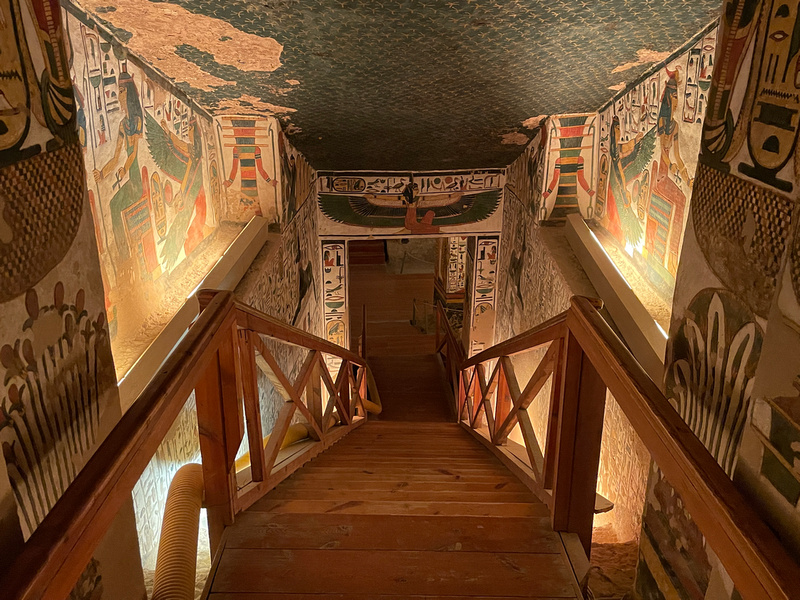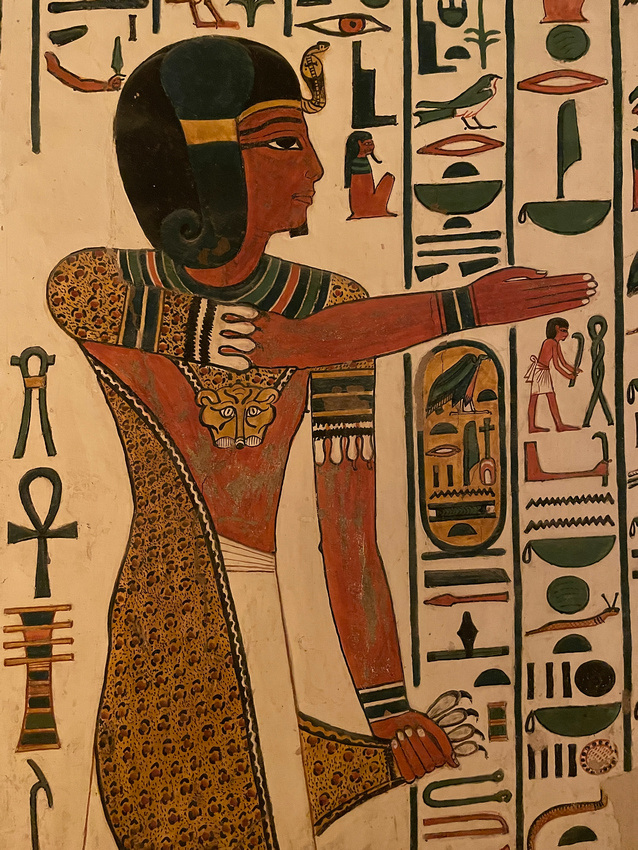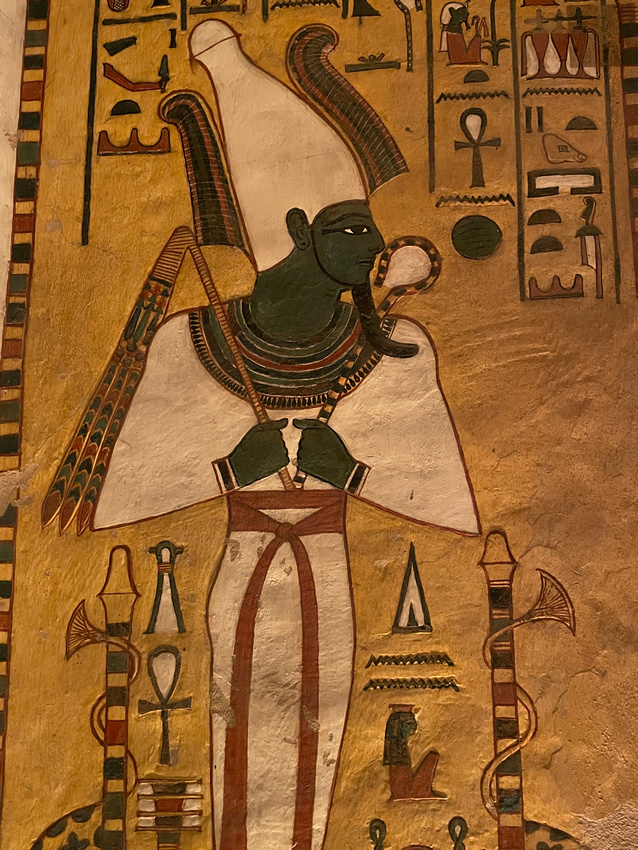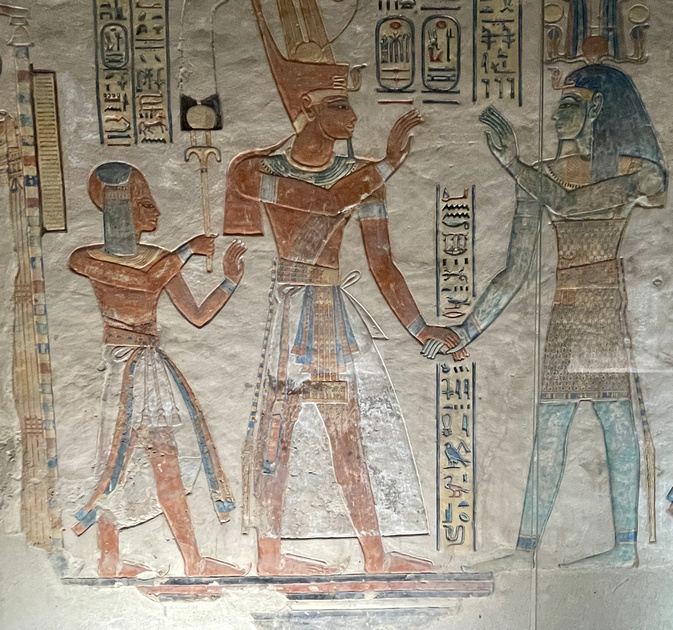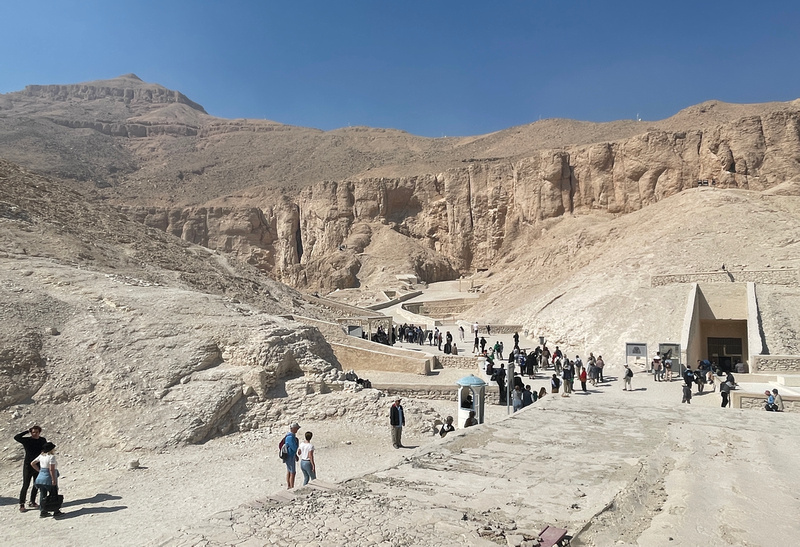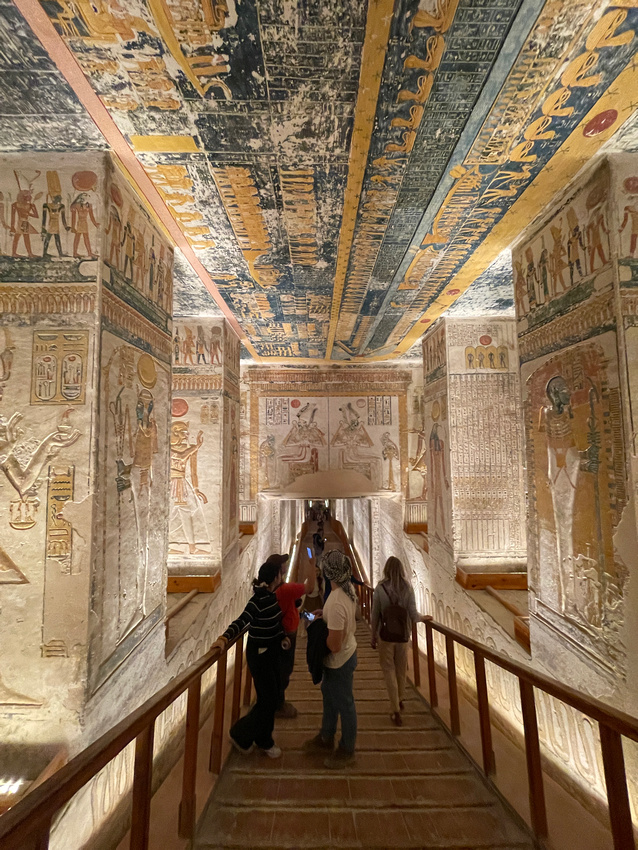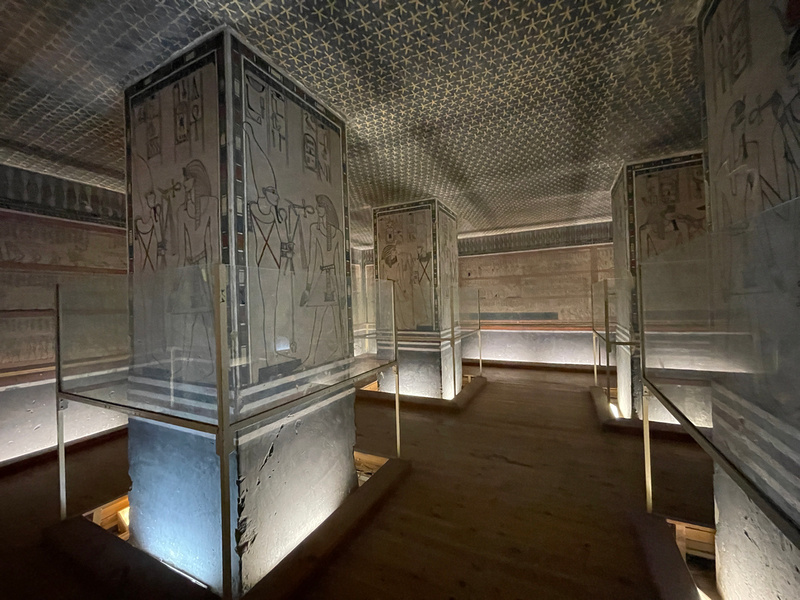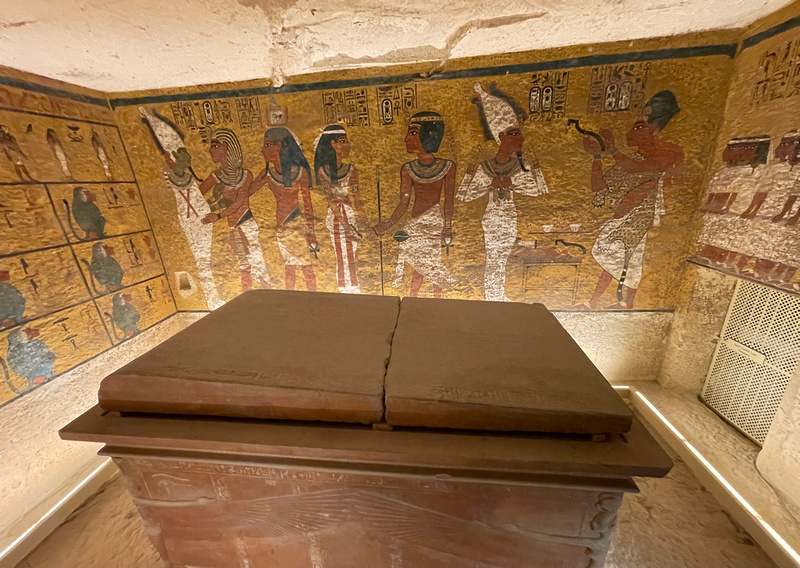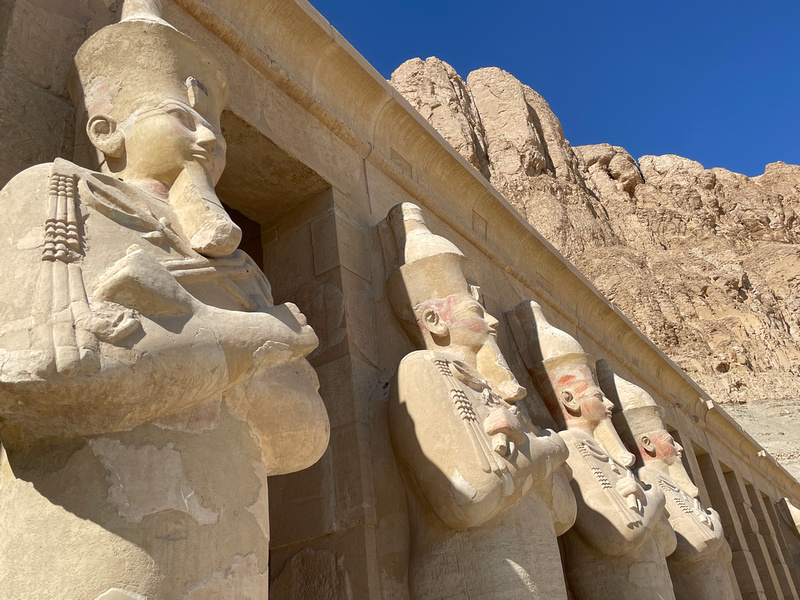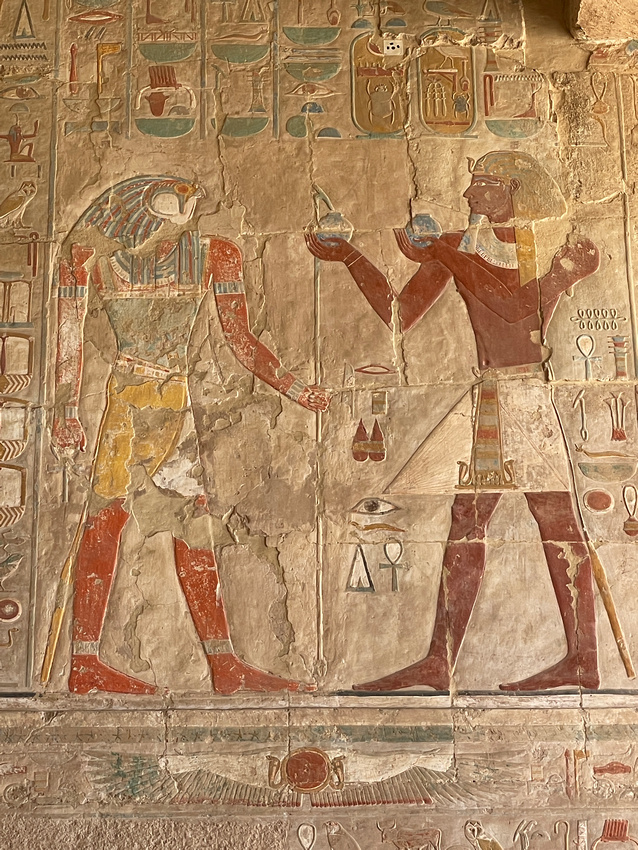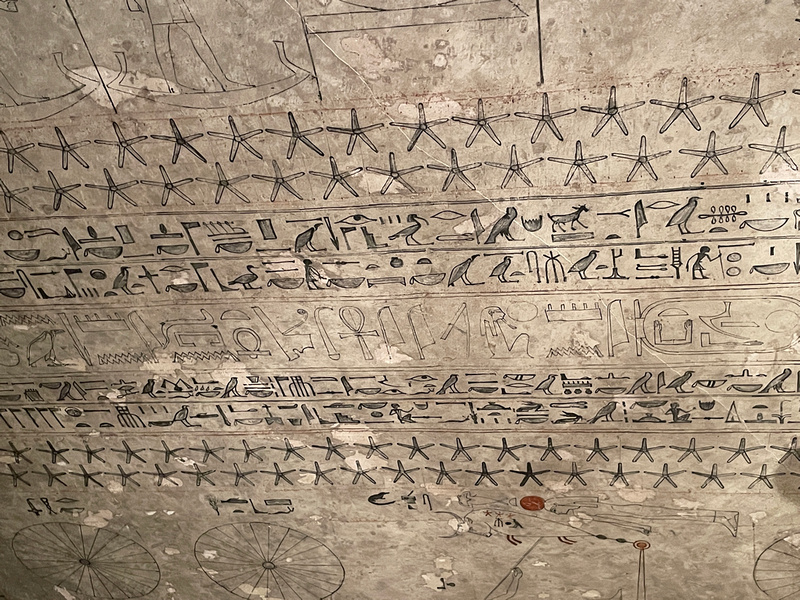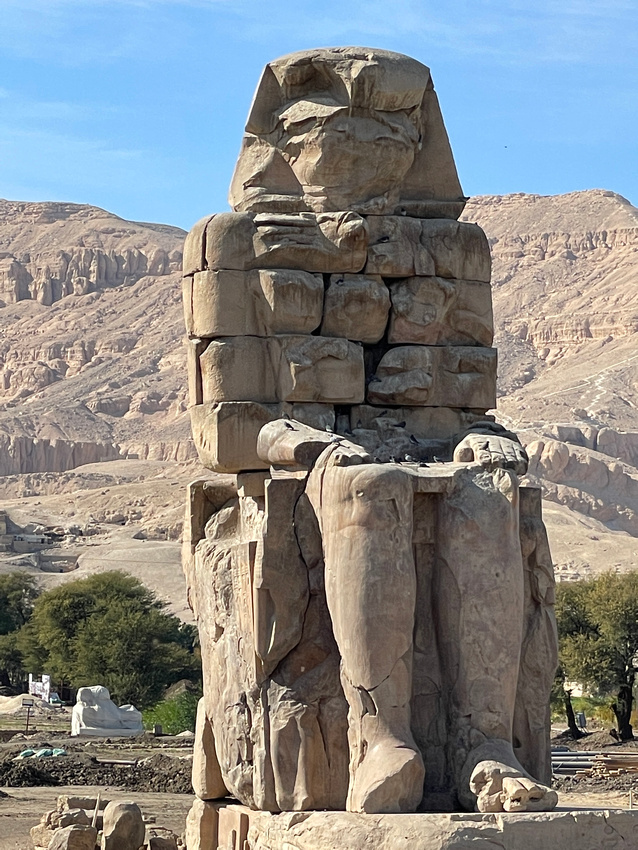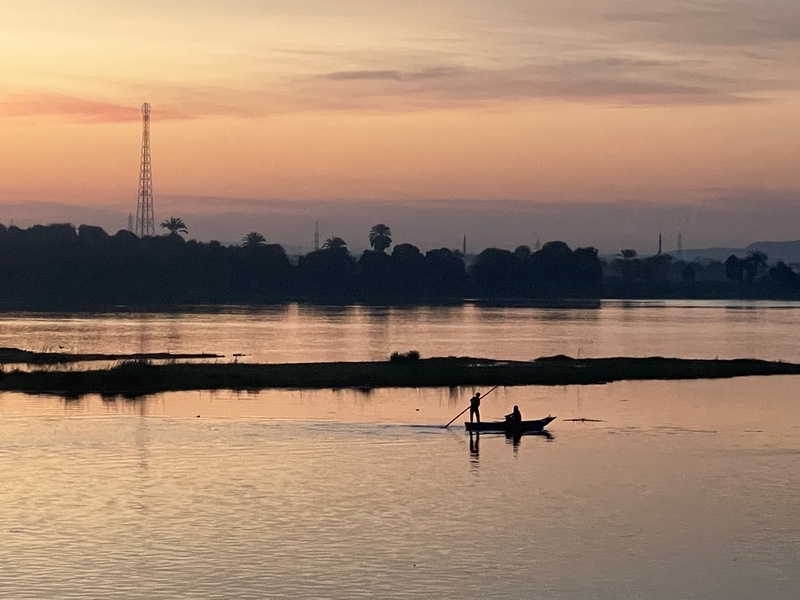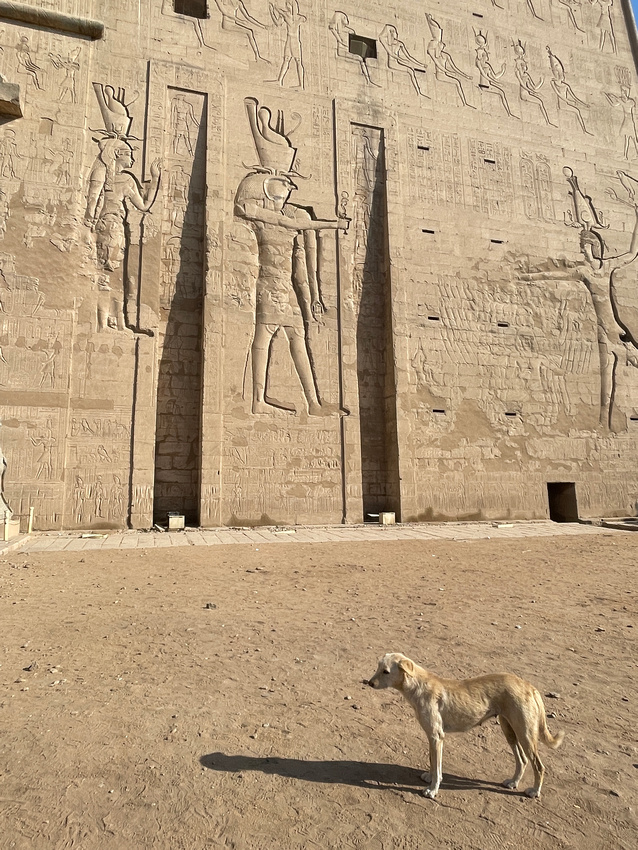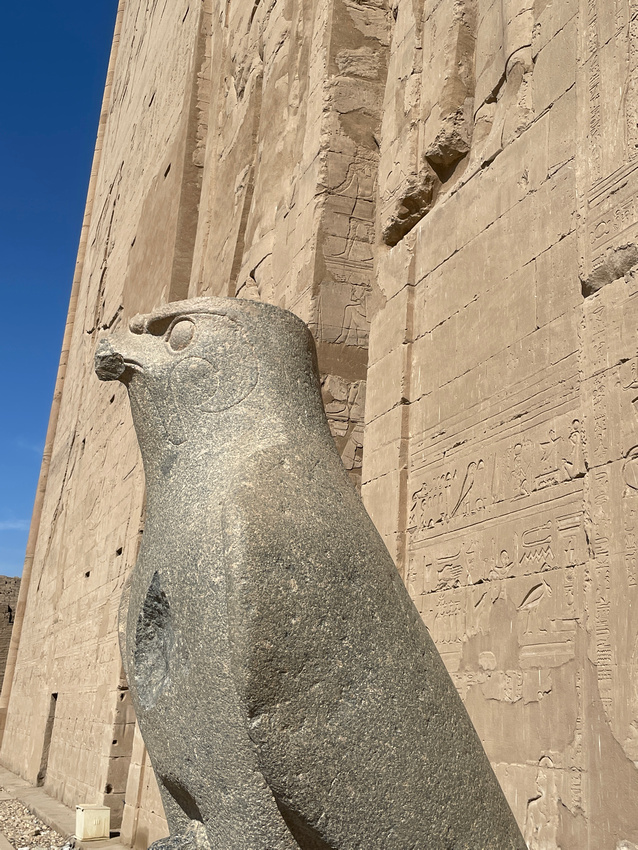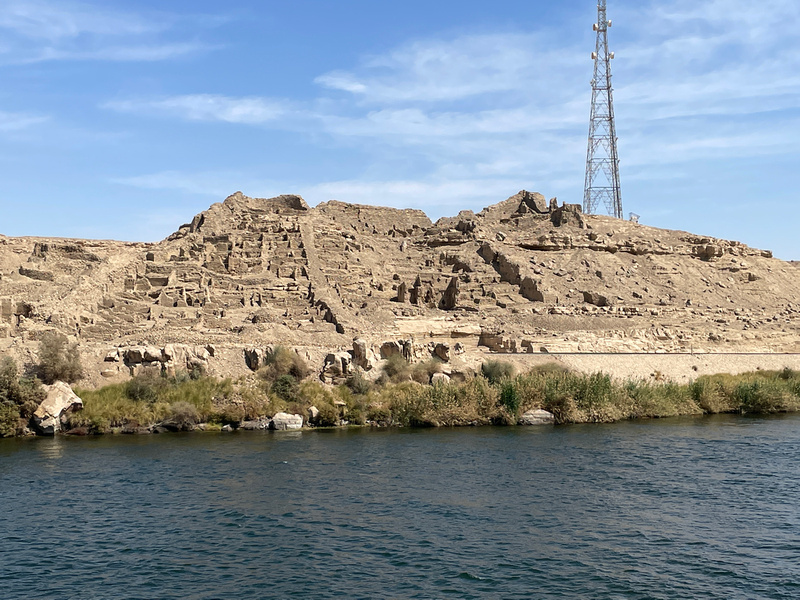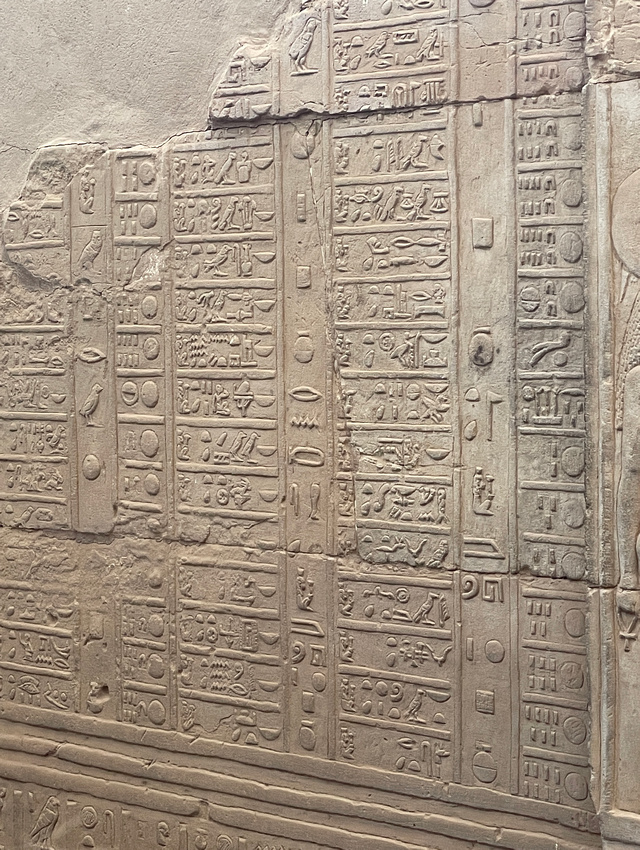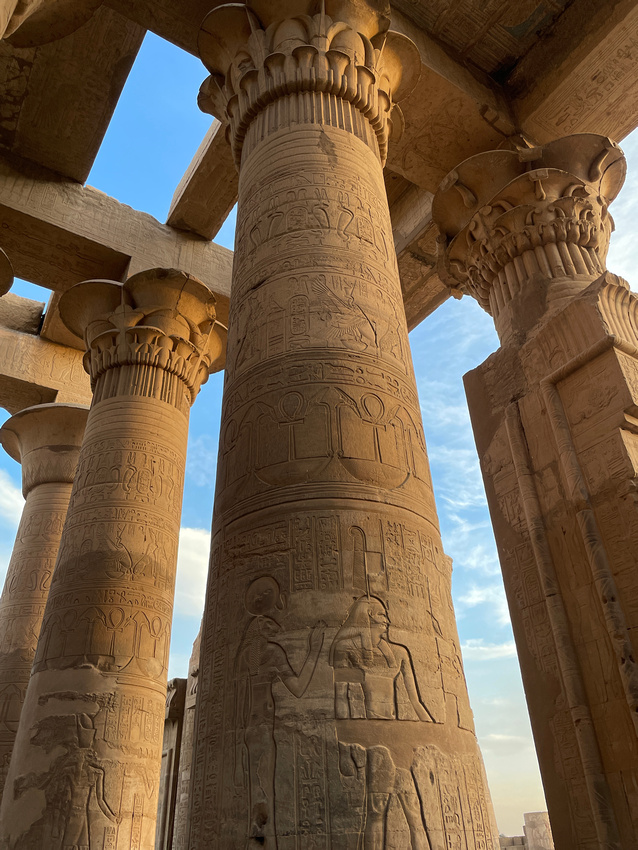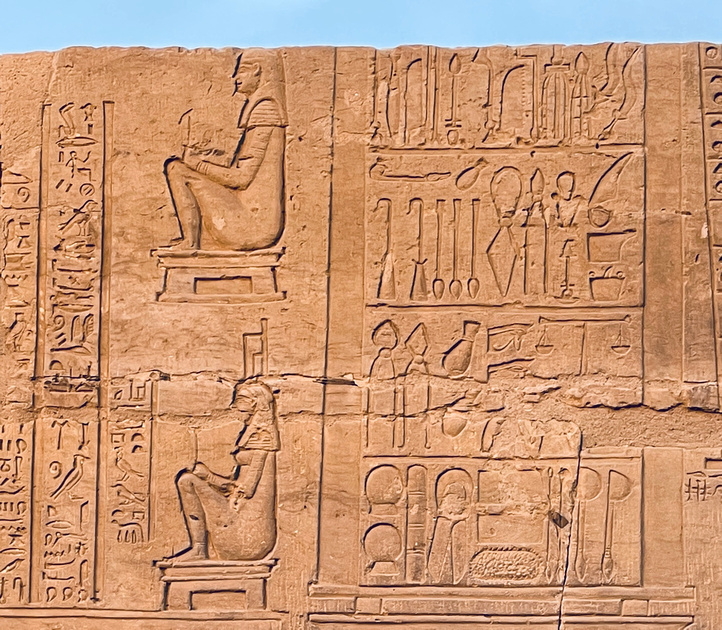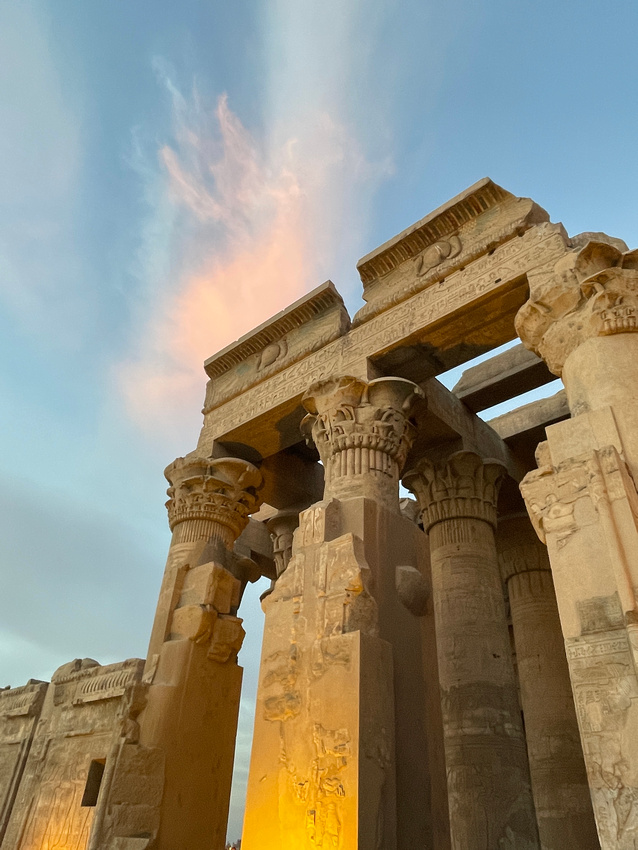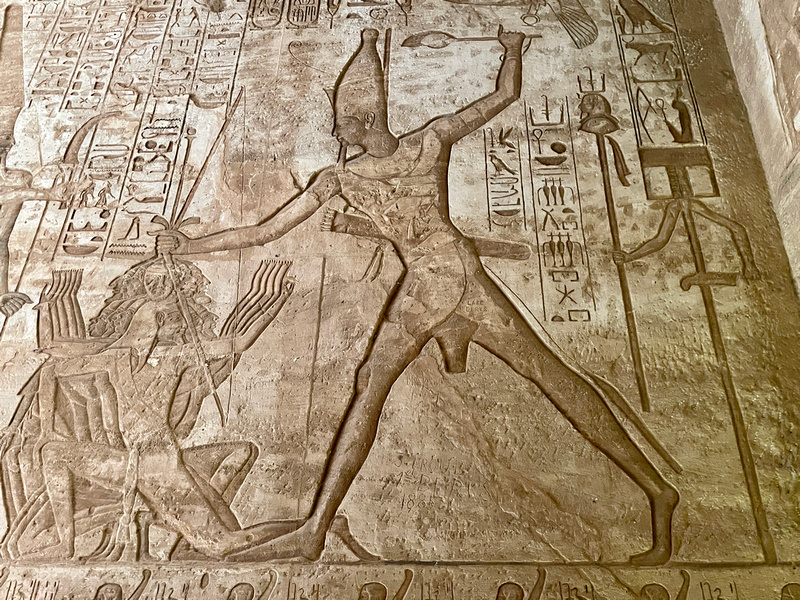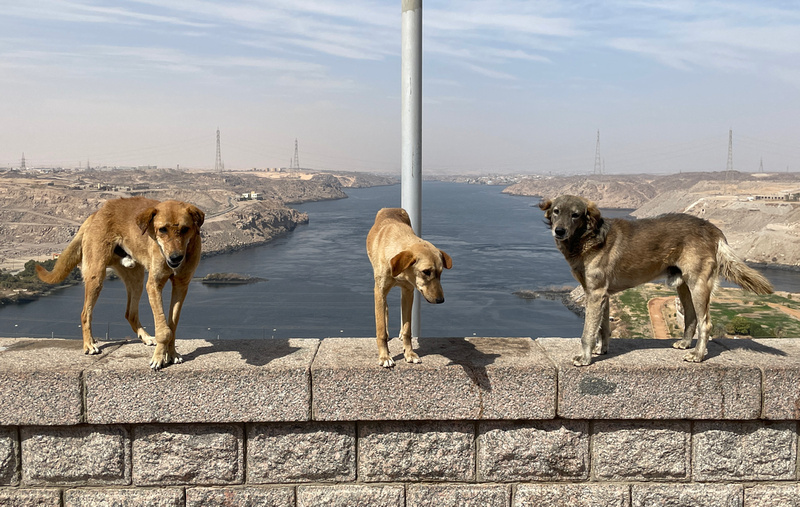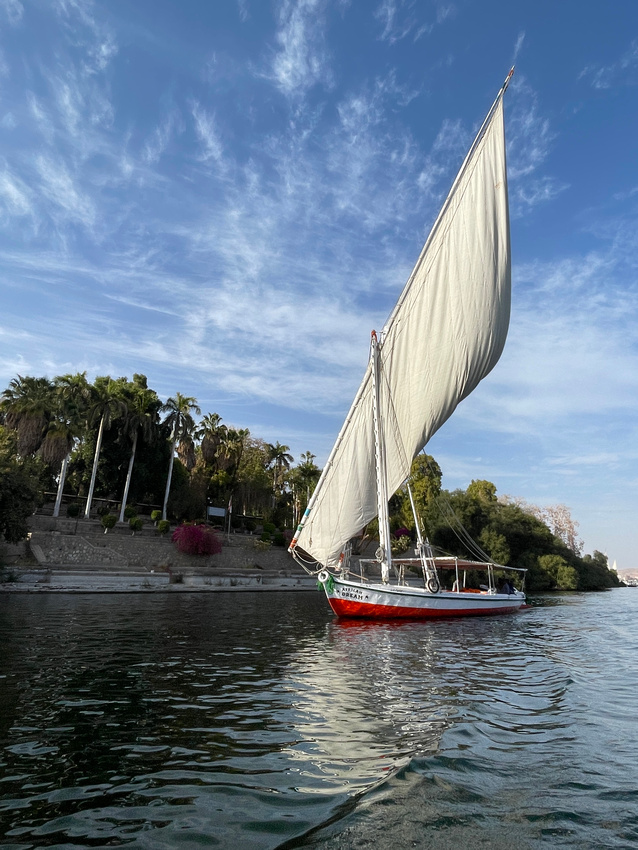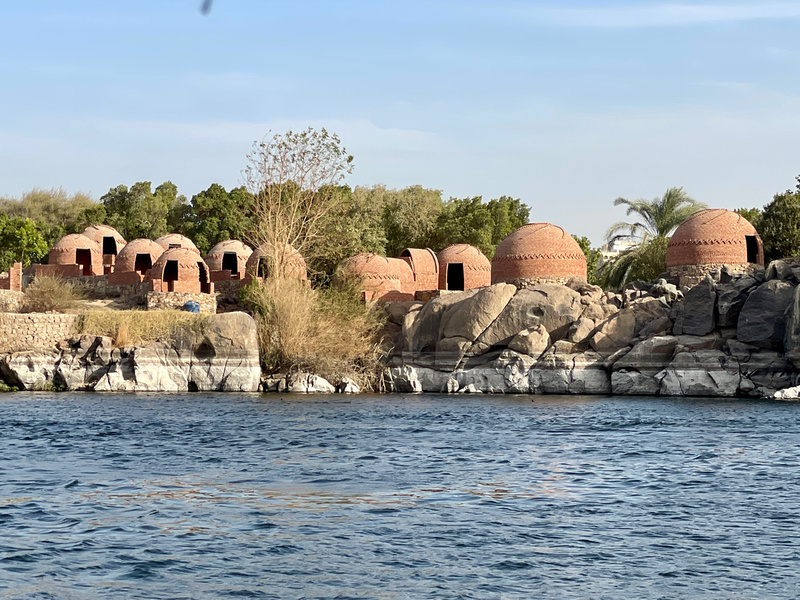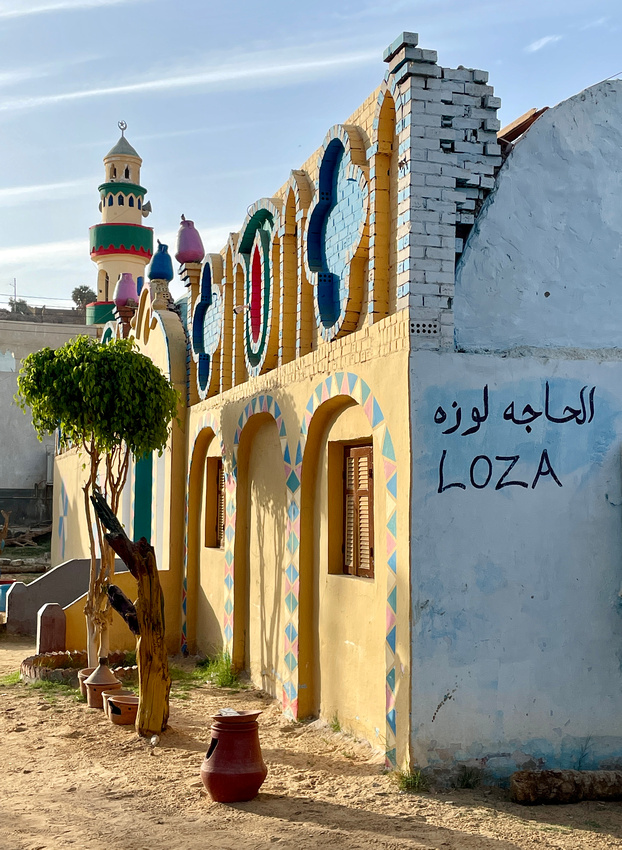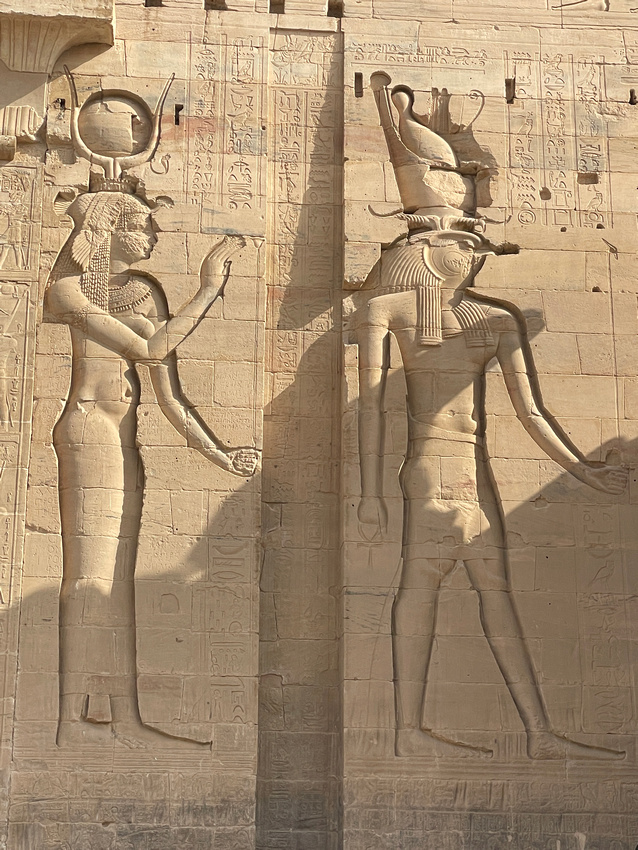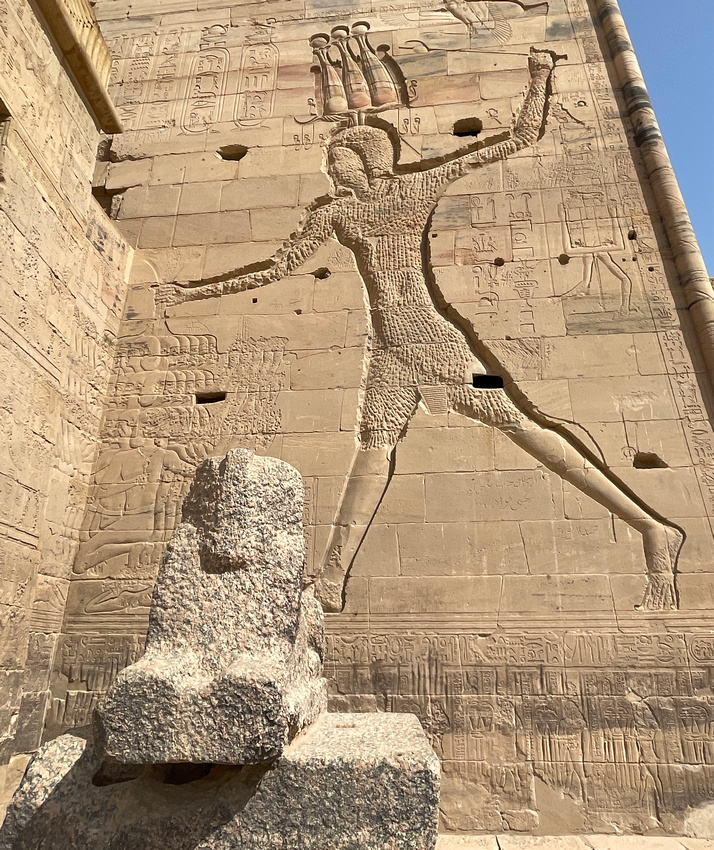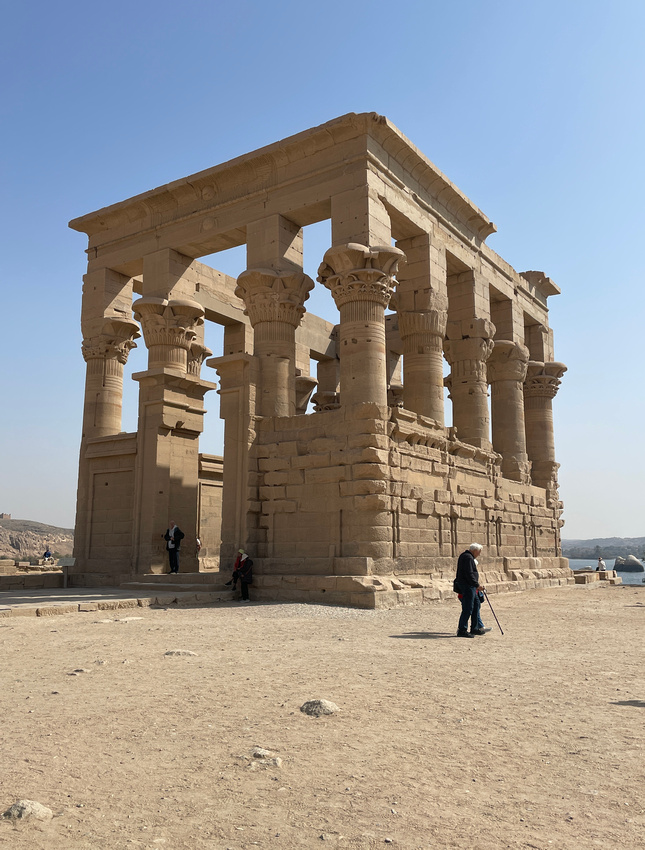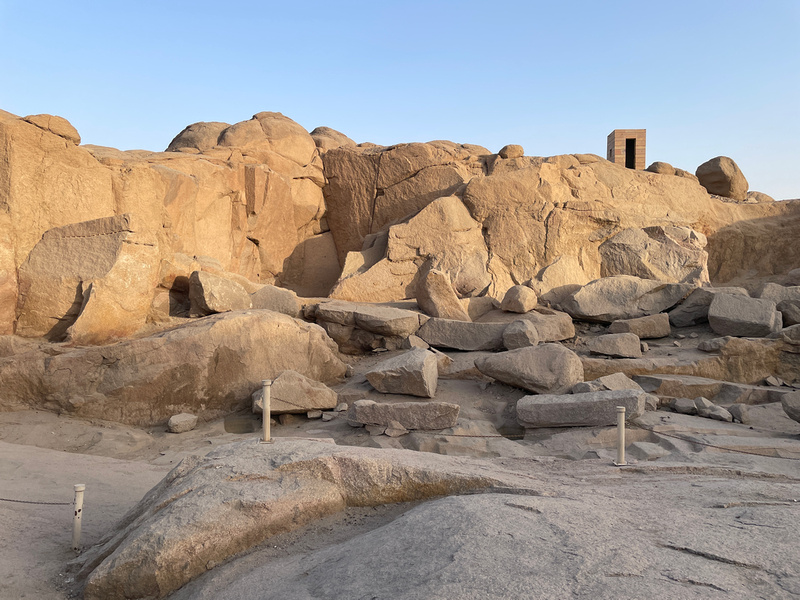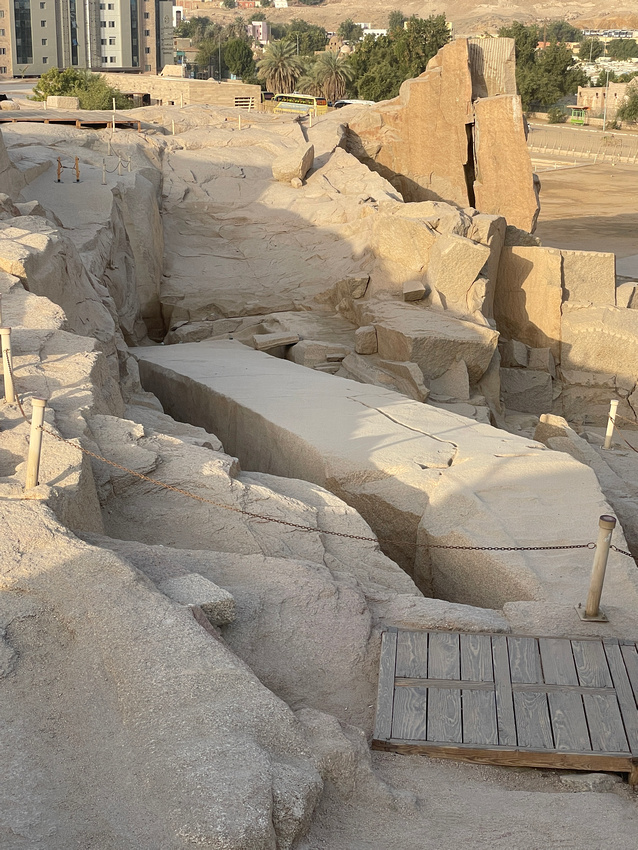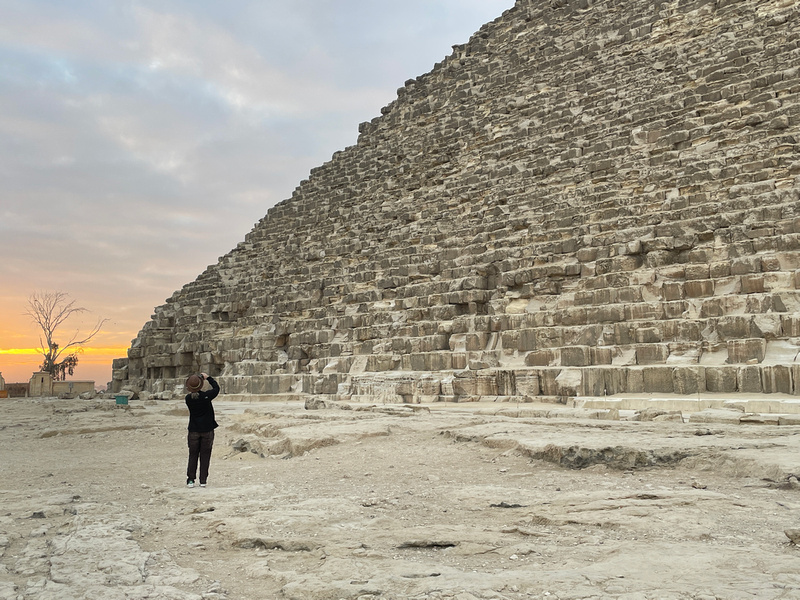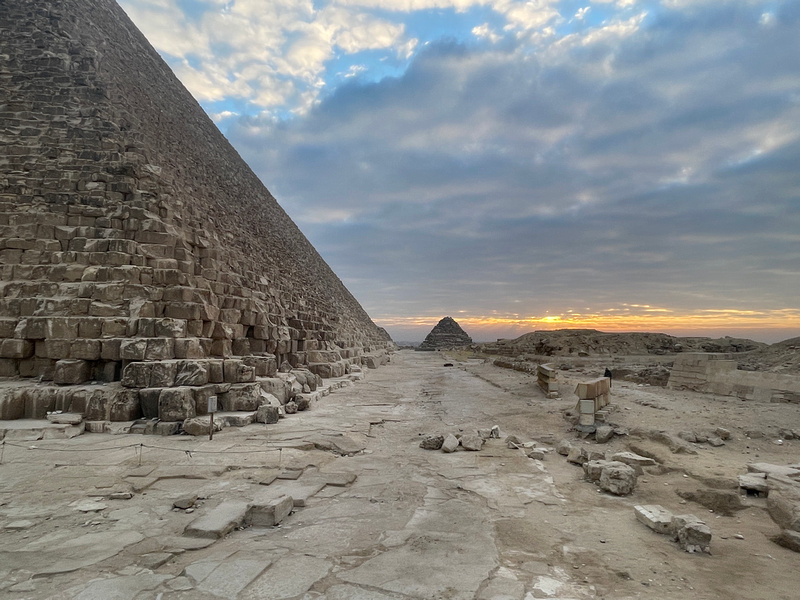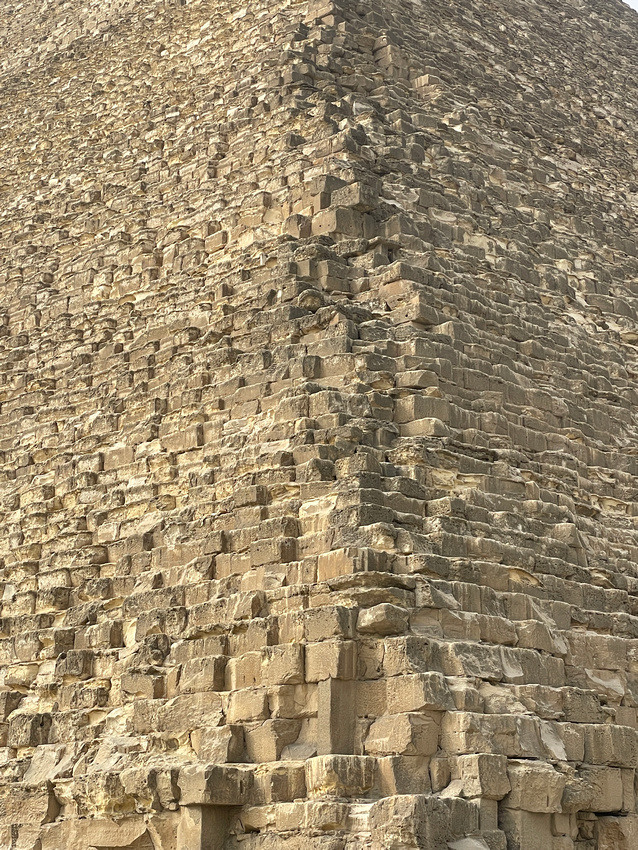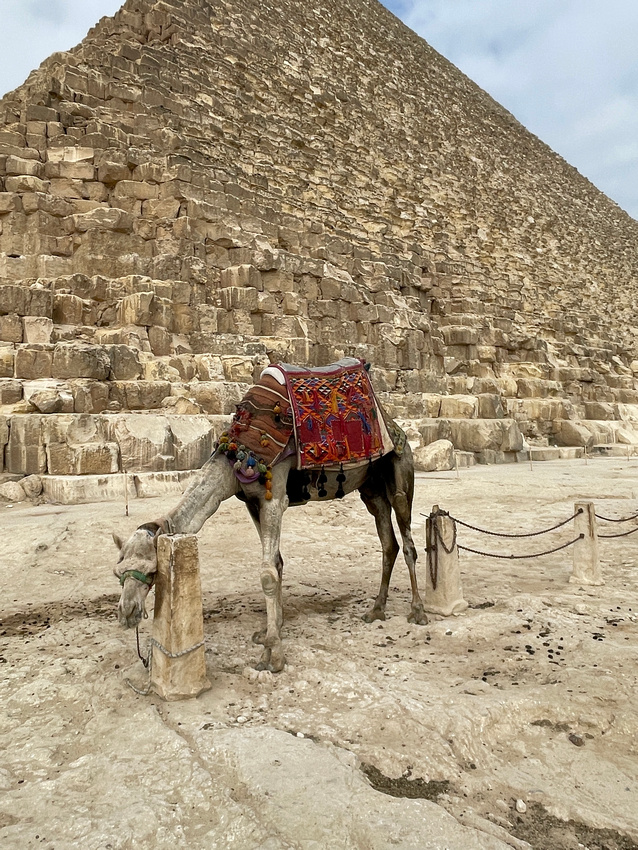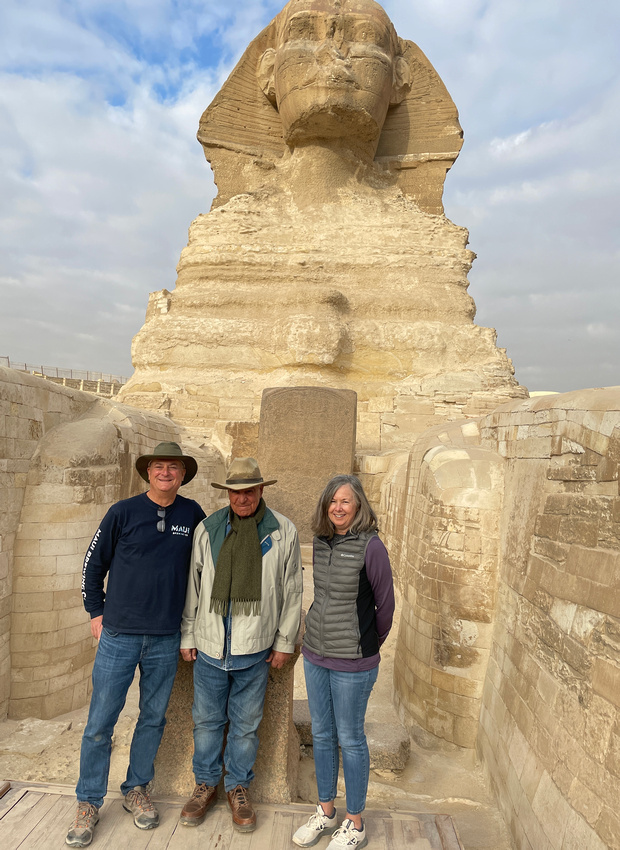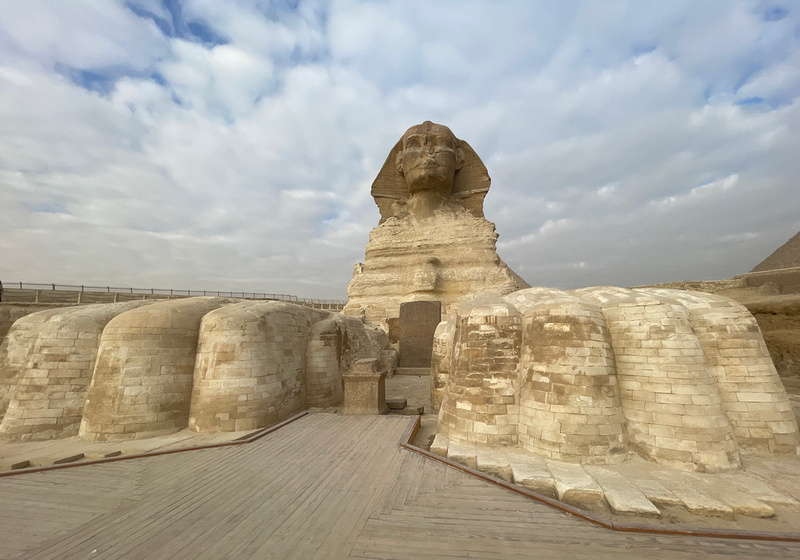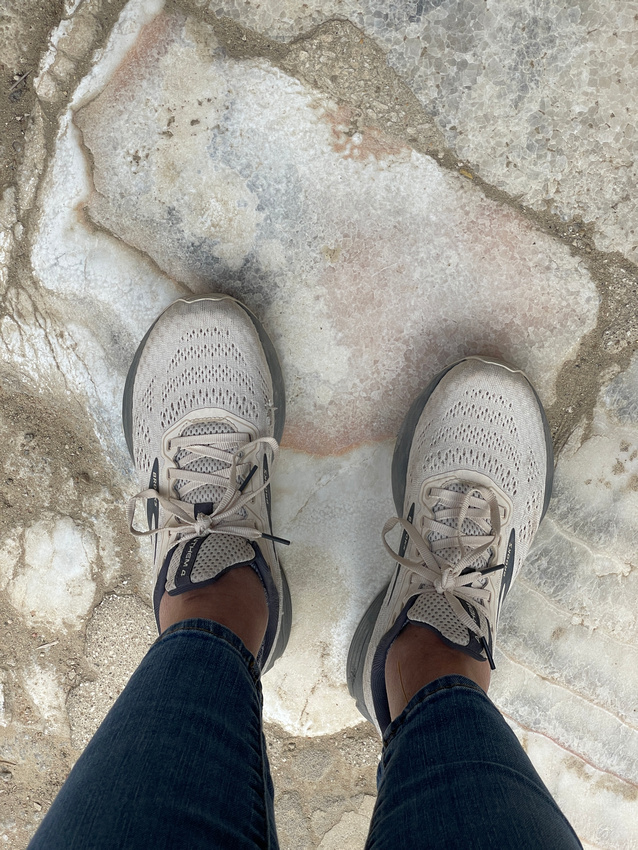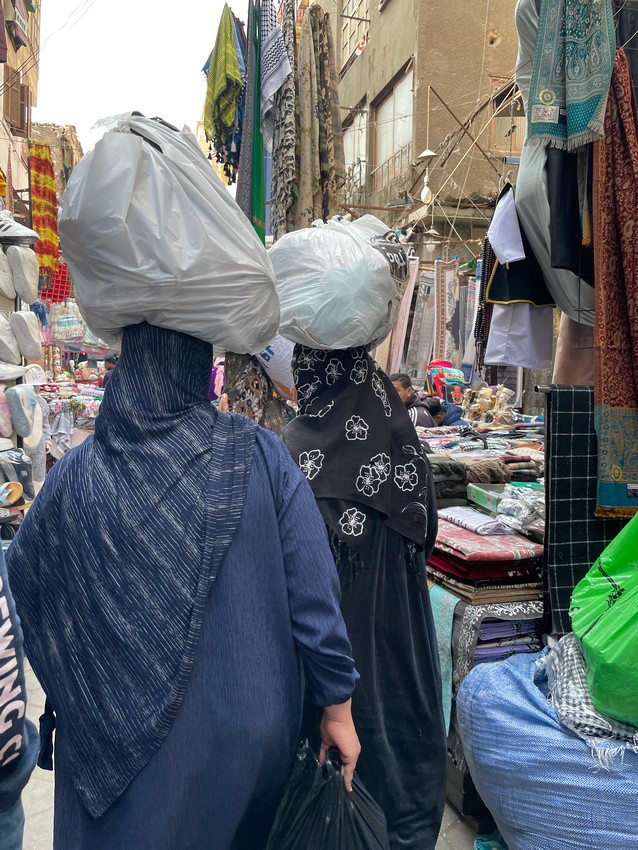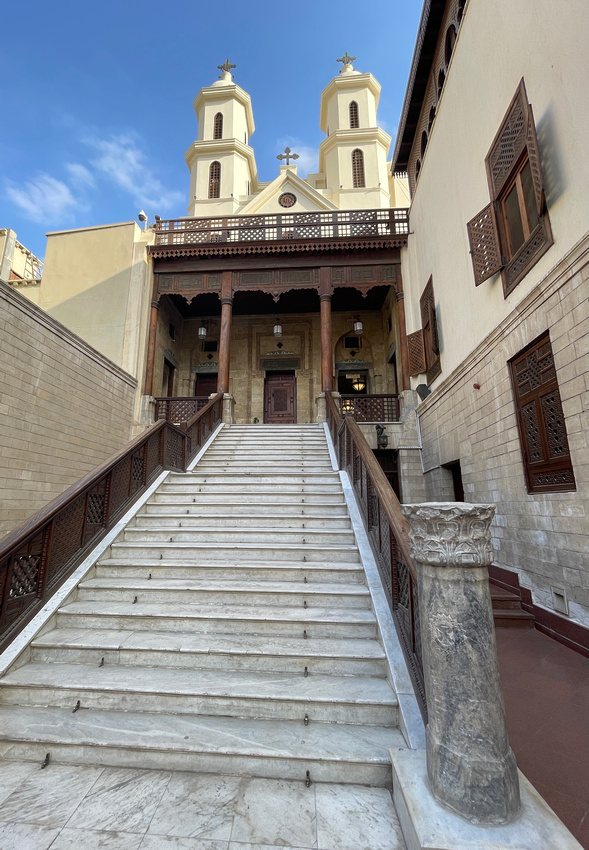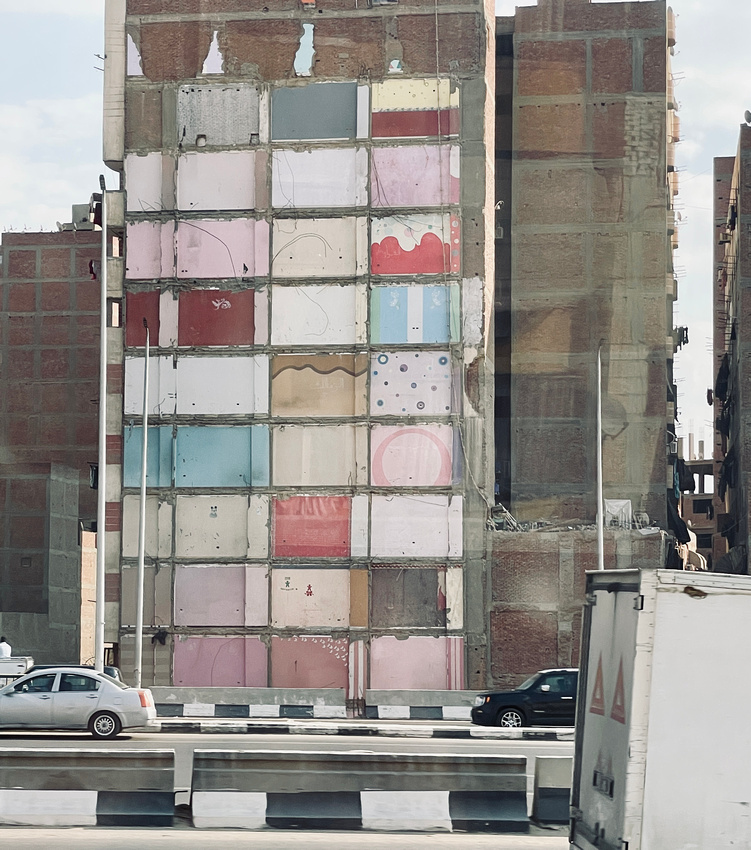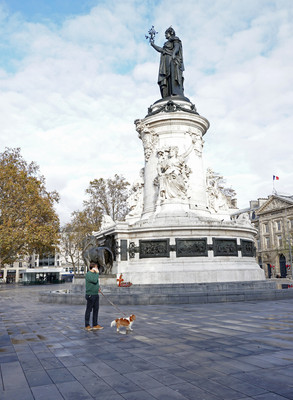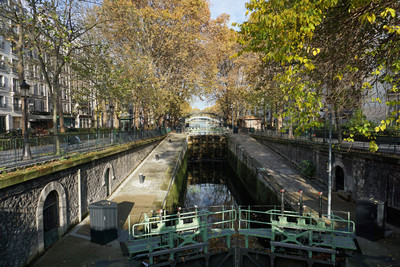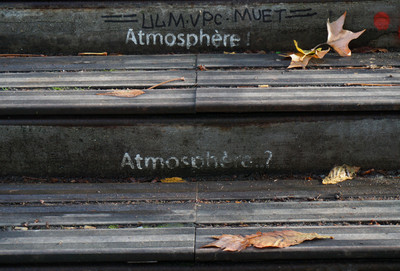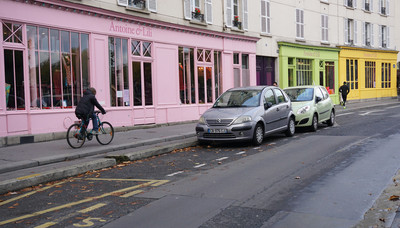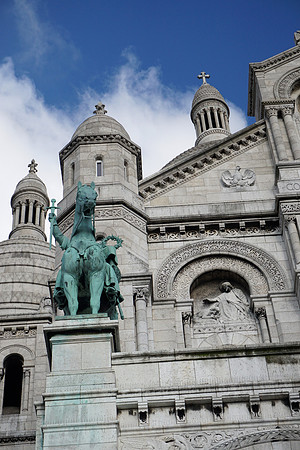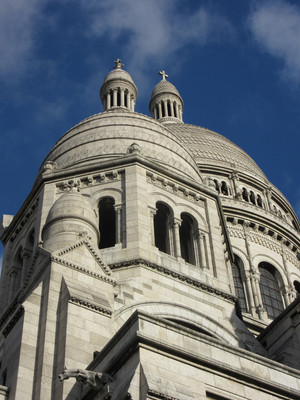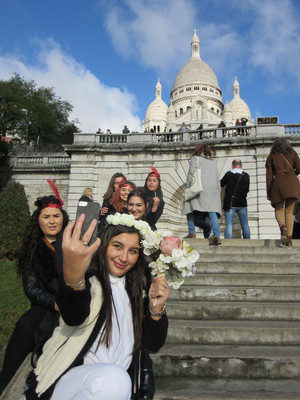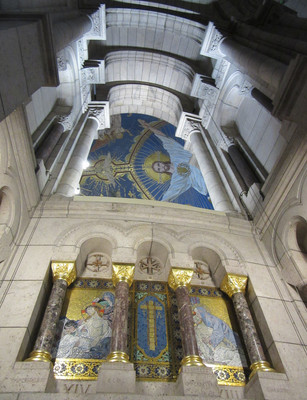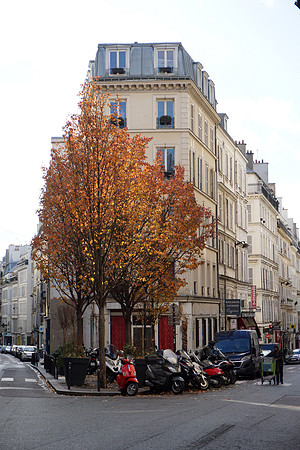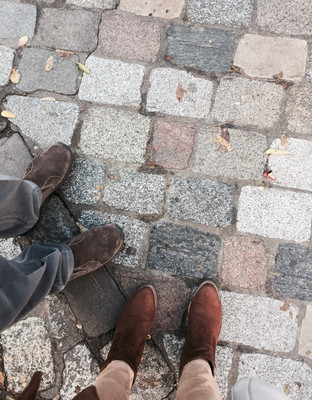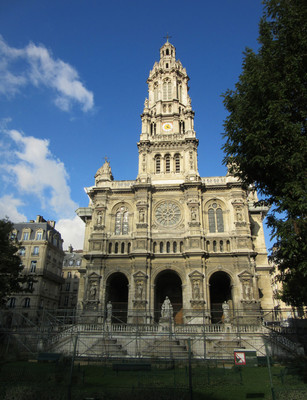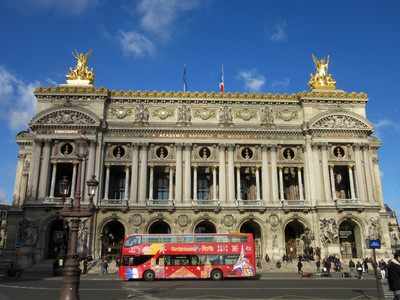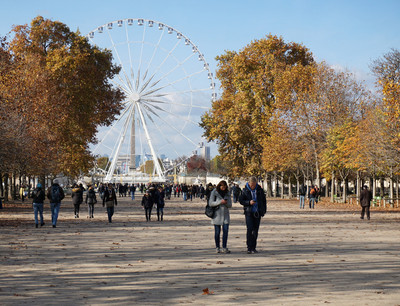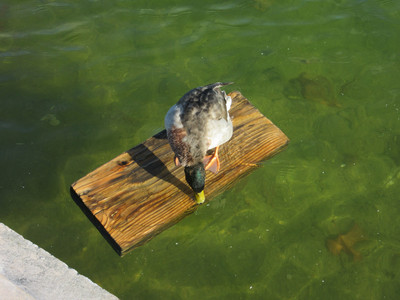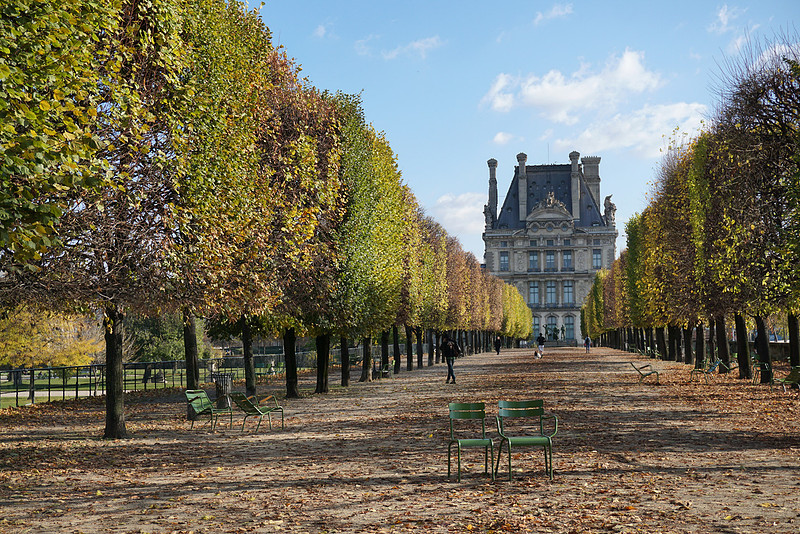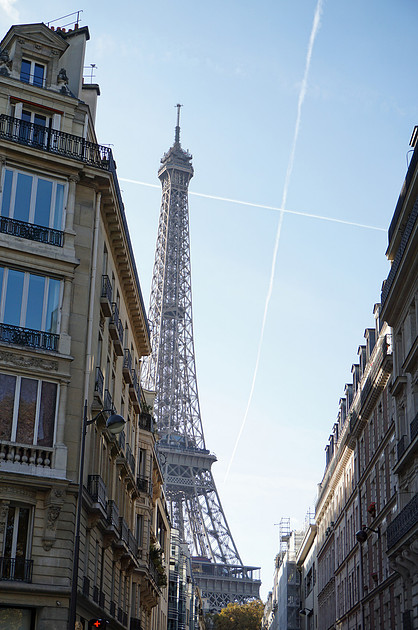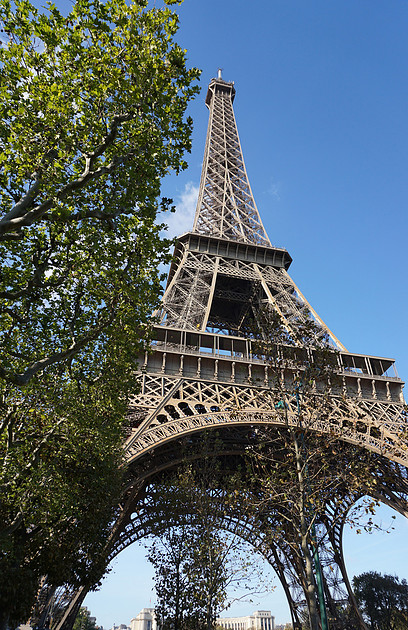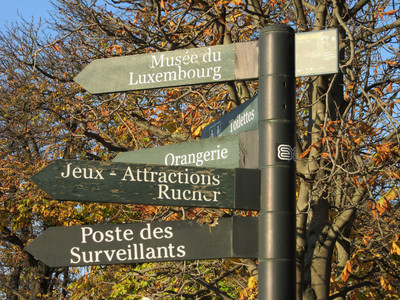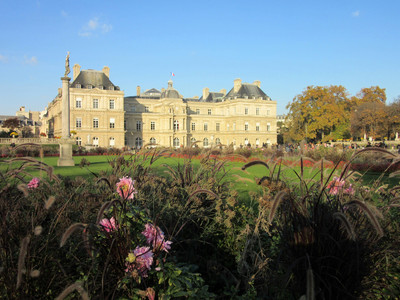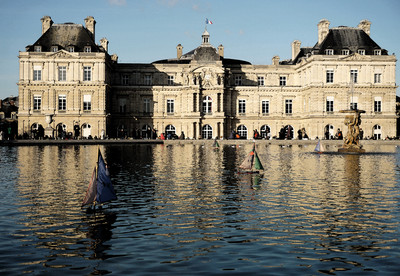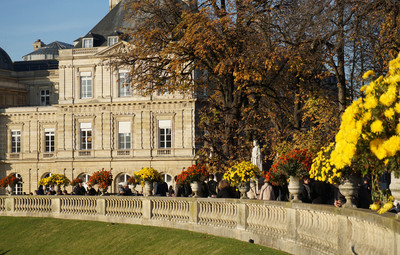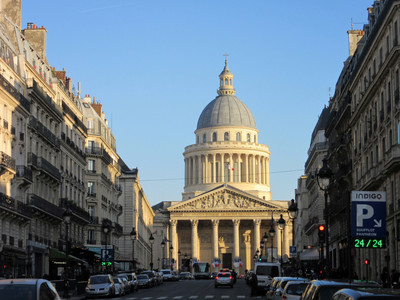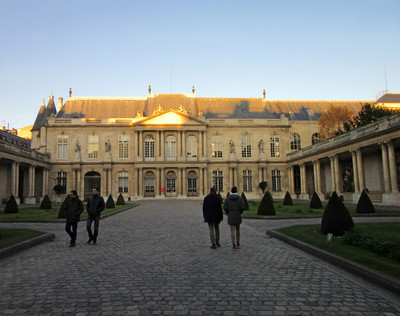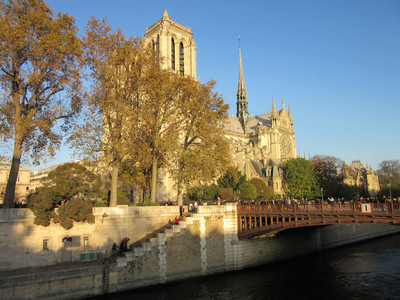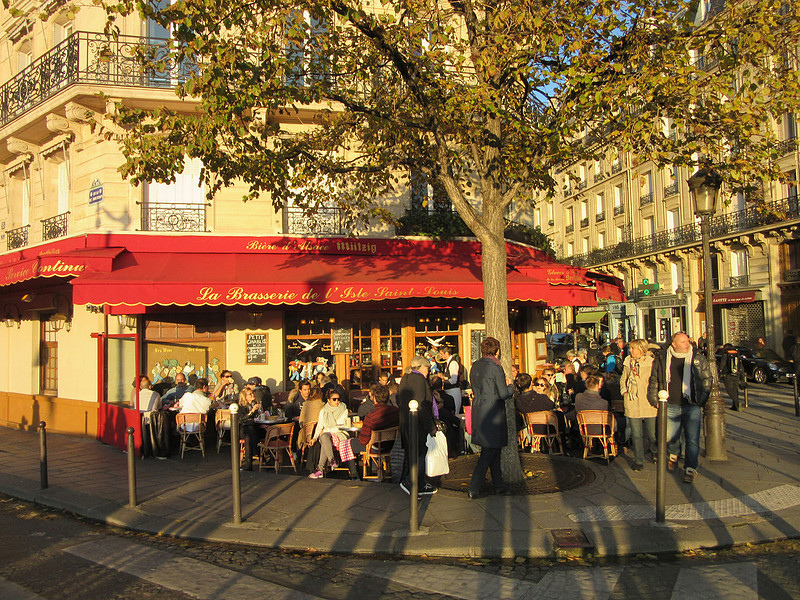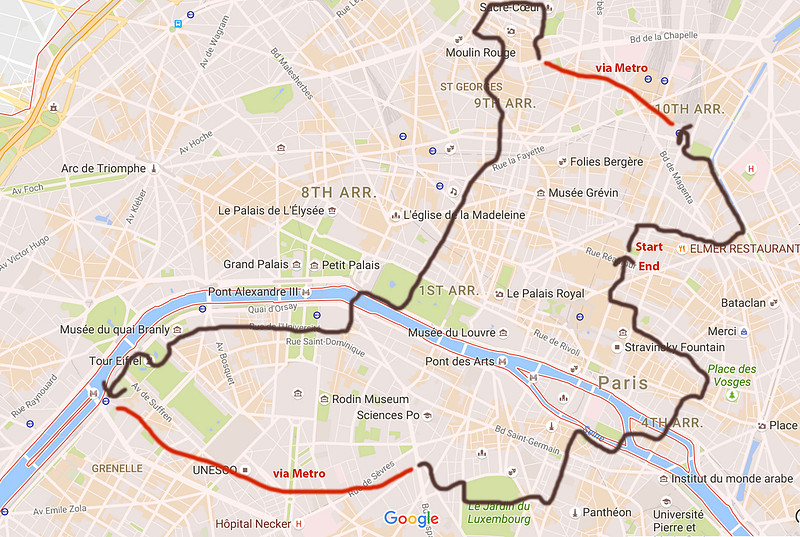|
Welcome to our blog, which is mostly about travel.
Egypt: February 2023This is as brief a summary as is possible (which is to say, not that brief) of our fast but fantastic introduction to Egypt. Arrival The excitement built even before we hit the ground with this great view of the Giza pyramids on approach to Cairo airport. Part of the new (but not yet open) Grand Egyptian Museum is visible to the left.
Our trip began, as it does for many visitors, at the Marriott Mena House. You can see why. It is literally walking distance to the Giza pyramids. This view from breakfast on our first morning was not something we'll forget soon.
Memphis, Dahshur and Saqqara These important historical sites are all located a few miles apart on the outskirts of Cairo. Our first stop was Memphis, the capital of ancient Egypt. Among the notable artifacts is the Alabaster Sphinx of Memphis (1400-1700 BC). The pharaoh is unknown, but the curled false beard indicates that this is a representation of the pharaoh in the afterlife.
The farming areas of the Nile extend to near Dahshur, site of important pyramids outside of Cairo. Our first camel sighting.
The Red Pyramid, the largest of the pyramids in the Dahshur necropolis and the fourth highest pyramid built in Egypt. It dates to around 2550 BC. Of course, we went inside it. It was an experience - with a 200-foot long, 4-foot high descending corridor into the core of the pyramid (but remember, what goes down must come back up). Our guide described it as a “5” on a difficulty scale of 10 and reminded us that we'd be using muscles that we don't normally use. Indeed, we were a bit sore the next day.
The Bent Pyramid, also in the Dahshur necropolis, dates to around 2600 BC, it is a transition between the first “step” pyramids and the later smooth-sided pyramids. It still has a lot of the original (one polished) limestone casing. A storm approached, but it never rained on us.
Saqqara is the ancient burial ground of Egyptian royalty and necropolis of Memphis. There is lots of ongoing excavation here.
At Saqqara, we visited the tomb of Mereruka, son-in-law of King Teti. It is a very extensive tomb, with 33 rooms and some pretty impressive art. This tomb is a mastabas, made from earthen bricks rather than cut into the rocks. Dates to somewhere between 2686 and 2181 BC.
The Step Pyramid of Djoser, highlighted here by pyramid-shaped rays of sun, is believed to be the oldest pyramid in Egypt, built in the 27th century BC.
The highlight of our time at Saqqara was the 4400 year-old tomb of Wahti, just discovered in 2018. It is the subject of the Netflix documentary, “Secrets of the Saqqara Tomb.” Dr. Mohammed Mohammed Yousef is a leader on the archaeological team and appears in the documentary. Here, he is showing us some mummified cheese (along with other mummified animals, including the baby lion featured in the documentary), before giving us a tour of the tomb.
Inside the tomb of Wahti. The grate on the floor is covering one of several burial chambers.
Just one bit of the well-preserved art in the tomb of Wahti. It was an amazing experience to see this.
The Egyptian Museum at Tahrir Square The new Grand Egyptian Museum has been “close” to opening for several years. Yet, no one can say exactly when that will be. We had the chance to ask some dignitaries who are very close to this. Here's what we heard, “Maybe later this year. Maybe next year 'depending on the elections.’” It is possible to visit now as part of a soft opening, but it costs a small fortune (we were told $3000 per person). And many of the most significant artifacts are still in the "old" museum. Indeed, there is plenty to see there. These are just a few highlights. The Narmer Palette, known as the first historical document in the world, depicting the unification of upper and Lower Egypt. It dates to about the 31st century BC.
Medium Geese, a painting that depicts a species of goose that lived 4,600 years ago. It was discovered in a tomb near the Medium pyramid.
Limestone statues of Rahotep and Nofret. Also discovered in the Medium necropolis.
The museum also houses the treasury, including gold mask, of King Tut Ankh Amun - but absolutely no photos allowed! Karnak and Luxor temples After a morning flight to Luxor, we started with one of the largest temple complexes in the world: The Karnak and Luxor temple, connected by a two-mile processional avenue of sphinxes. This is “out back” at Karnak Temple, where lots of recovered pieces are housed.
Our tour of Karnak Temple included time with Dr. Mostafa Waziri, the Secretary General of the Supreme Council of Antiquities. He is a great speaker - and happy to spend plenty of time addressing questions. Here he talked about some of the work going on at this and other sites. He told us that when he was asked to take on his current role, his answer was, “Only if I can still spend most of my time digging and not behind a desk.”
Dr. Waziri and some of his team showed us a piece discovered by a local worker (pictured) 40 years ago, when he was a boy living nearby and his father was working at the site.
Dr. Waziri also took us in the Temple of Khonsu, a part of the Karnak complex that is currently under restoration and mostly closed to the public. We visited an offering room with some fabulous, well-preserved art.
Back in the main part of Karnak Temple, this is the Great Hypostyle hall.
In the evening, we visited Luxor Temple, constructed over hundreds of years by Amenhotep III, Ramses II, Tut Ankh Amun, and other pharaohs.
Valley of the Queens and Valley of the Kings Ancient Egyptian tombs/burial sites are mostly on the West Bank of the Nile. Because the sun sets in the west, the Egyptians believed that is where the dead entered the afterlife. So, we took an early shuttle boat across the Nile to see tombs in the Valley of the Queens and Valley of the Kings.
Balloon rides are popular at Luxor. We chose not to ride - primarily because it was one chance to “sleep in” - but we saw plenty of them in the air.
Our first stop was the Valley of the Queens and Nefertari’s tomb. Nefertari was the favorite queen of Ramses II. Her tomb is about 3200 years old. It was an absolute highlight of the whole trip, due to both the size and spectacular (and well-preserved) art.
Inside Nefertari’s tomb. During restoration, there is NO re-painting - only recovery and cleaning. By the way, photo restrictions have been relaxed significantly in the last few years.
There are three other open tombs in the Valley of the Queens. This one is for one of the young sons of Ramses III. Here, the art depicts Ramses III introducing his son to one of the gods as part of the transition to the afterlife.
We moved on to the Valley of the Kings. There are many tombs here. We entered 6 of them.
This is the tomb of Ramses V and Ramses VI.
This is the tomb of Amenhotep II. This is not open to the public - but was available to our group with special ministerial permission. Its art is distinguished from others because it is (mostly) outlined rather than fully painted. It was also used as a hiding place for other royal mummies to keep them from being raided.
This is the tomb of Tut Ankh Amun, who ruled until his death at age 19 around 1325 BC. It is quite small compared to others. Some archaeologists believe there may be additional chambers beyond one of the walls.
The Mortuary Temple of Hatshepsut, who assumed the throne around 1478 BC and ruled for about 20 years. She initially took the throne when her son, Thutmose III, became the pharaoh at age 2 and continued to rule for about 20 years. Her image has been defaced from some ancient monuments. There are various theories, with one being her gender.
Chapel of Anubis at the Mortuary Temple of Hatshepsut.
The highlight of our visit to Hatshesut’s temple was a private visit to Senenmut’s tomb (~1470 BC). It is a small and unfinished tomb entered from a quarry below the temple and best known for its astronomical ceiling. He was a government official and the chief architect of Hatshepsut's mortuary temple. This was another fun climb down a long, dark and shallow corridor!
Finally, one of the Colossi of Memnon (statues of Amenhotep III), across the river from Luxor.
Edfu and Kom Ombo temples, plus some sailing on the Nile Overnight, our boat sailed to Edfu, and we woke to this lovely sunrise on the Nile.
Edfu temple, dedicated to the worship of Horus, the "falcon" god of the sky (and kingship) and son of Isis and Osiris. It is a Ptolemaic temple built between 237 BC and 57 BC. This is part of the massive and well-preserved front pylon.
Horus at the front entrance of Edfu Temple.
After the visit to Edfu, we sailed up the Nile towards Kom Ombo. This is a video view of the east bank of the Nile.
Archaeological site on the east bank of the Nile
More video, this time from the West Bank.
We visited Kom Ombo Temple at sunset. Kim Ombo is another Ptolemaic temple (180-47 BC) and is unique because of its “double” design for two sets of gods - including Sobek (god of fertility) and Horus the Elder.
One of the unique artifacts is a calendar depicting each day of the year.
Kom Ombo columns.
Here’s another distinctive artifact on the other side of the twin temple: birthing images and medical tools (remember, god of fertility).
Another photo of Kom Ombo at sunset.
Abu Simbel, Aswan and a Nubian village It's a long drive from Aswan to Abu Simbel (~3 hours), not far from the border with Sudan. Driving is necessary for many tours due to the limitations of flight schedules. We began before sunrise but eventually had plenty of time to watch the desert roll by.
The domed roofs of Nubian villages help with temperature control in this region, which can range from very cold in winter to extremely hot in the summer.
Nubian village near Aswan.
Our visit to the Nubian village was primarily to a school that is supported by Archaeological Paths. We had a quick lesson on how to pronounce various characters in both Arabic and the Nubian language.
Temple of Philae and the ancient granite quarry The temple of Philae, dating to around 280 BC, was at risk of flooding since the Aswan lower dam was built. In the middle of the last century, it was dismantled, moved to an island and reassembled. Most of the existing structures are Ptolemaic, but some are Roman. This temple has an interesting mix of "graffiti" that dates back centuries. If you look at Hathor’s face (below), you can see that the detail has been chiseled out and defaced. That most likely happened during the early Christian Era reign of this area. And how do we know that is Hathor (goddess of love, fertility, beauty, etc.)? Look at the nearby hieroglyphs for the “bird in the box.”
More Egyptian figures defaced by during the period of Coptic rule.
One of the Roman additions is Trajan’s temple.
Nearby is an ancient granite quarry, which was the source of material for many temples and monuments in the area - and beyond.
In the quarry is an unfinished obelisk commissioned for Hapshetsup. It apparently cracked during fabrication and was never finished or moved.
Giza Plateau We are back in Cairo for the finish - and the top highlight - of our trip. Our group had access to the Giza Plateau before it opened to the public. We were able to visit several chambers inside the pyramid without the crowds, and then go outside to watch the sunrise.
The Great Pyramid of Khufu is the tallest of the structures, but today it is only about two feet taller than the middle pyramid of Khafre.
There are a few camels around the area, mostly for photos.
We also had a one-hour presentation from Dr. Zahi Hawass - you know, the one in all the documentaries. He talked about various recent discoveries. This took place between the paws of the Sphinx, an area off limits to the public.
Unique angle on the Sphinx, not available to the public.
Around Cairo Finally, a few other scenes from around Cairo. Khan el-Khalili souk (bazaar).
Saint Virgin Mary's Coptic Orthodox Church, also known as the Hanging Church, is one of the oldest churches in Egypt which dates to the third century. It belongs to the Coptic Orthodox Church of Alexandria.
When the city began construction of a new beltway, it tore down parts of buildings (not whole buildings) to make room for the highway. The painted squares are remaining walls of individual rooms/apartments.
Last but not least, the legendary Cairo traffic. If the road has three marked lanes, there will be at least six lanes of traffic. And don’t count on crossing the street.
Many more photos coming soon! 28,000 steps across ParisI wish I had something interesting going on right now to test the blog function, but I don't. So my first blog post is going to be a little trip down memory lane...with that "lane" being the many scenic streets of Paris. This is just to test how this may work for a trip report, so don't expect great prose--just a bunch of photos and some text that explains a crazy walk that few visitors to Paris would ever consider but that we live for. Background: We took a quick three-day trip to Paris in November 2016 to celebrate our anniversary. We have been to Paris a number of times before, so this trip was not about visiting the big sites but rather soaking in the atmosphere and eating well. On our second day, the skies cleared and eventually turned a brilliant blue--even if the temps were in the 40s. So we bundled up and set out on foot. Our only definitive destination was one not part of any of our previous trips: the Canal St. Martin. From there, we improvised. We walked. And walked. To the tune of more than a dozen miles and nearly 30,000 steps. And it was great. (hover over photos for captions) From our hotel (123 Sebastopol, which we loved by the way), we started out across Republique.
Then we headed up along the Canal St. Martin, with almost no company along the way. By this point of the trip, we're starting to notice that tourism appears to be down in the city. Despite it being late fall, the trees still had some leaves.
Eventually, we peeled off and took the Metro to Montmartre, where we hiked up the hill, stopped to listen to a street musician playing Leonard Cohen's "Hallelujah" the day after Cohen had passed away (poignant), interrupted someone's bachelorette party, took a look inside the Basilique du Sacré-Coeur de Montmartre (I've been inside before, but Chris had not). One other notable change around Paris is the security required to enter sites such as this.
What goes up, must go down. So down the hill we went...through the cobblestone streets of Montmartre, checking out the interesting windows along the way.
At this point, we were improvising--with a general sense that we were heading towards the Opera house. Our intuition proved correct, and we eventually emerged from behind the Opera and took a few photos. We never could get that bus to leave, though.
Now we were approaching familiar territory--through the Place Vendome and toward the Tuileries (no photo, but we passed Mario Batali on Rue de Castiglione, orange Crocs and all).
From here, we crossed the river and then stop for lunch (beverages and a plate of frites) before continuing on toward the Eiffel Tower. We didn't go up--been there, done that. And the lines were really long (every tourist in Paris must have been here at that moment) just in case we were tempted. We did walk under it--and for the privilege of doing so, we had to go through security again.
Our legs were getting a little tired now (you think!), so we once again took to the Metro (we purchased a carnet, which was perfect for our three days in Paris) and headed a bit east. Our next destination was the Luxembourg Gardens, perhaps my favorite place in Paris and the spot I aim to visit every time I'm there. I particularly love it in the fall. We watched the kids pilot boats across the lake in front of the palace.
It is always sad to leave the Luxembourg Gardens. But the afternoon is wearing on, and our next goal was to take photos of the great golden hour light on Notre Dame.
And here's the prize:
Not to be outdone, we also captured golden hour on one of our other favorite places in Paris: Ile Saint-Louis (we stayed on the island the last time we visited here, in 2000). Love golden hour and long winter shadows!
And as the sun started to set, we headed back to 123 Sebastopol to reward ourselves for a great day of walking. It wasn't chock-full of sites, but it was the Paris we wanted on this particular trip and this particular day. And we'd do it all over again! For the record, here is our route.
This has been fun. Maybe I will do another post about our three really good dinners in Paris.
© onelittleworld
|
